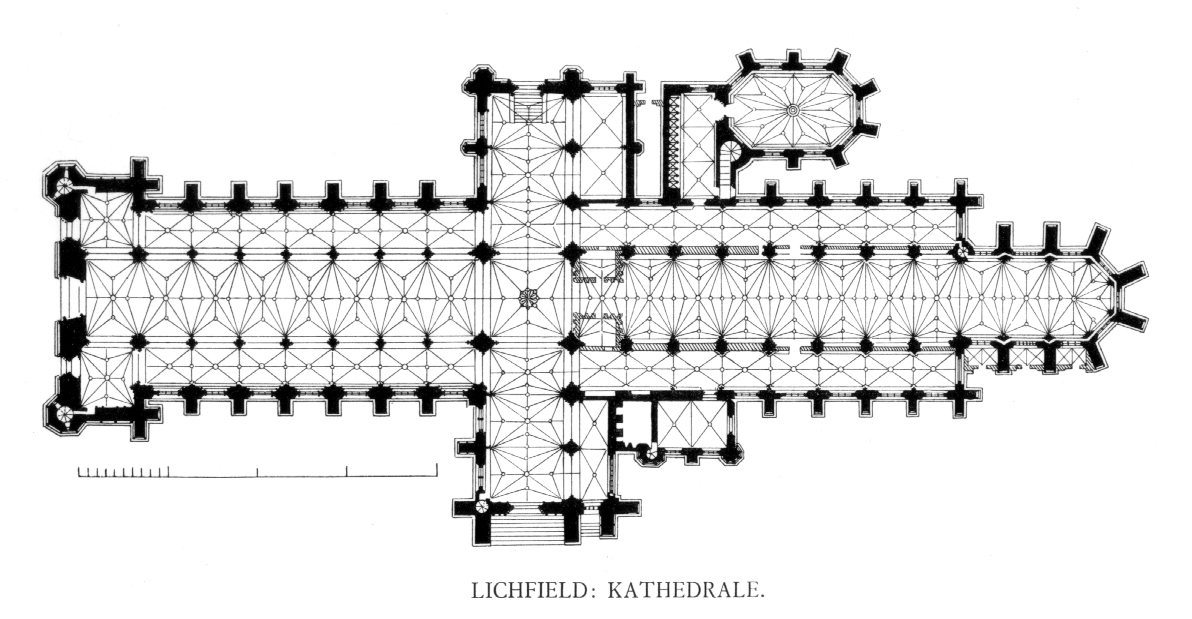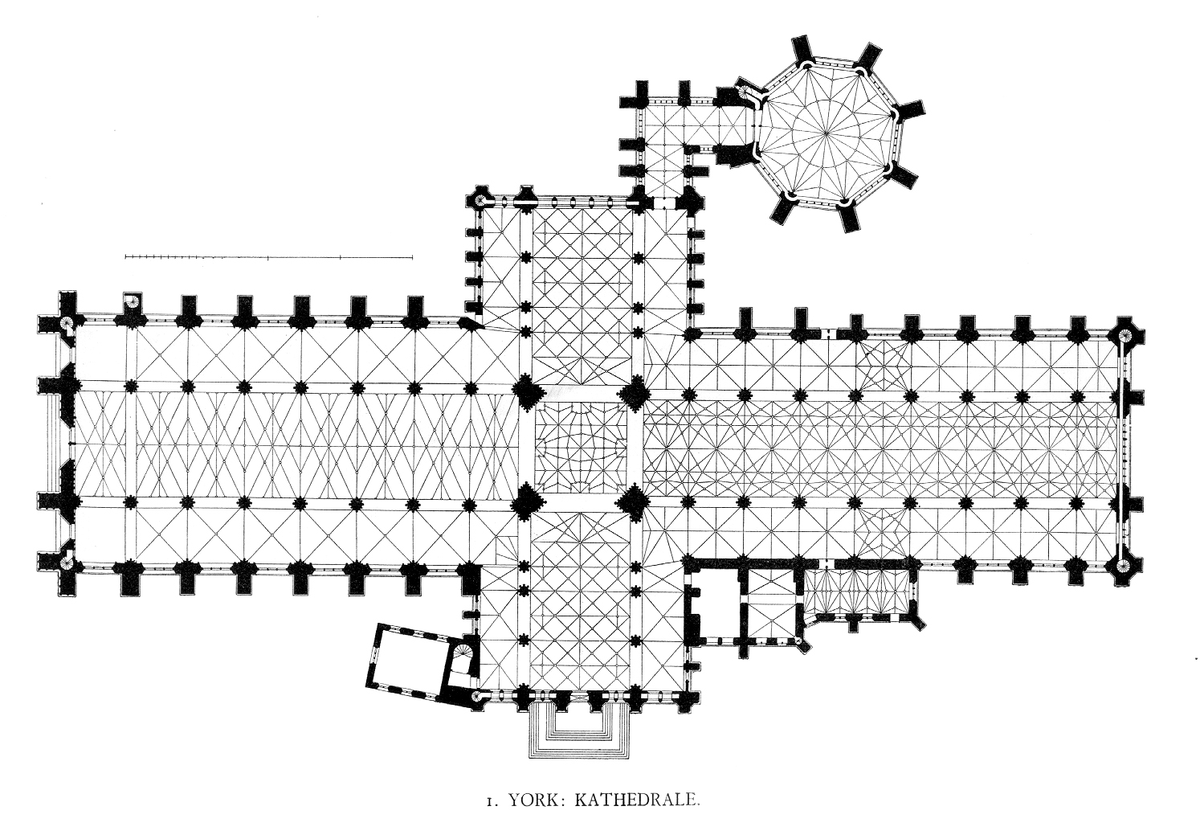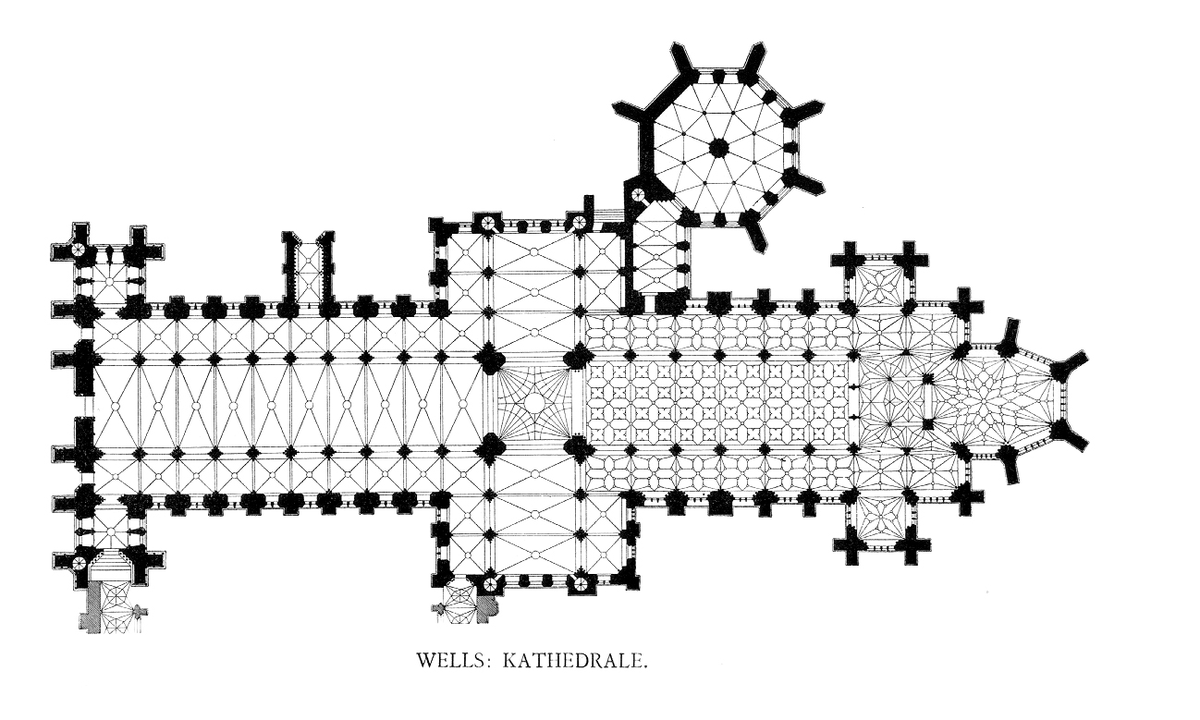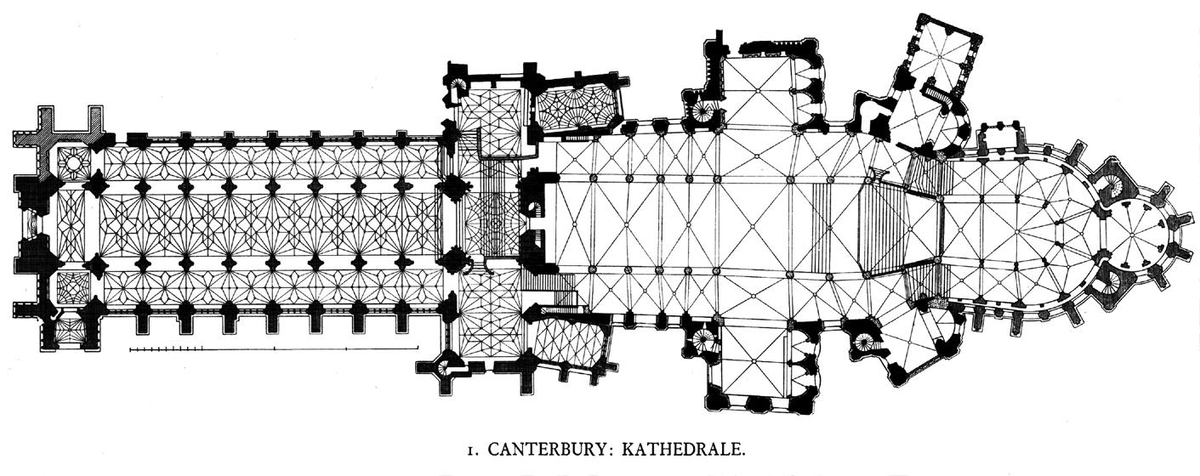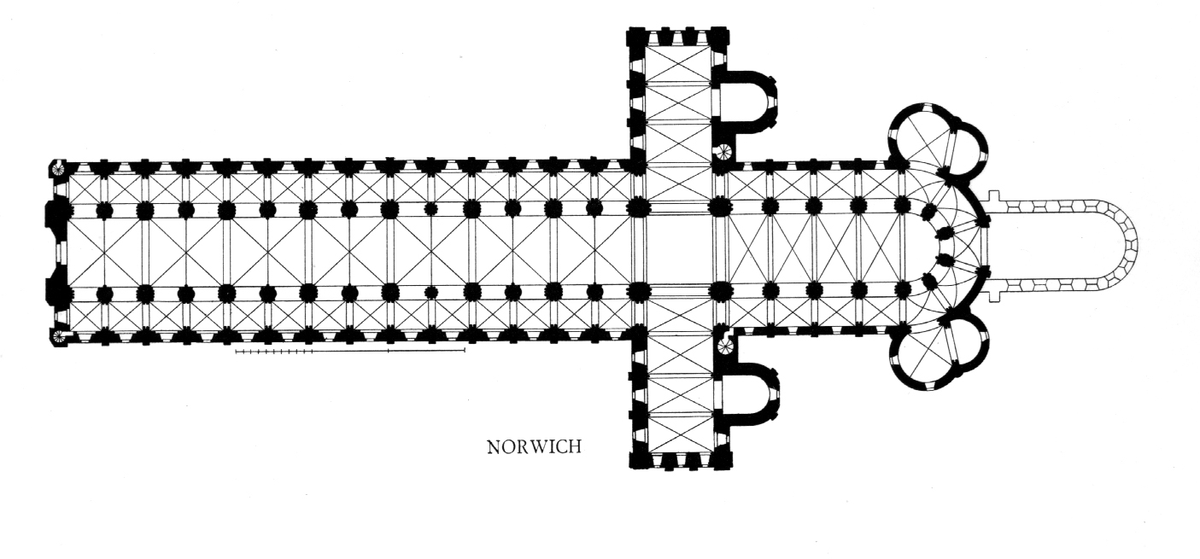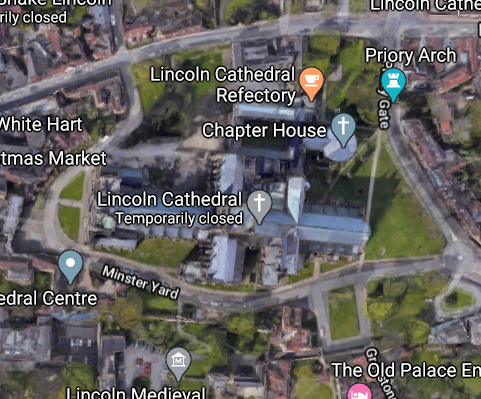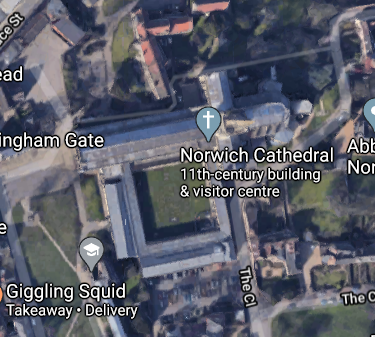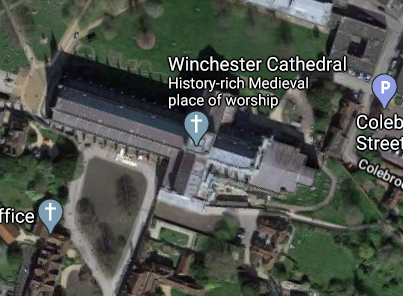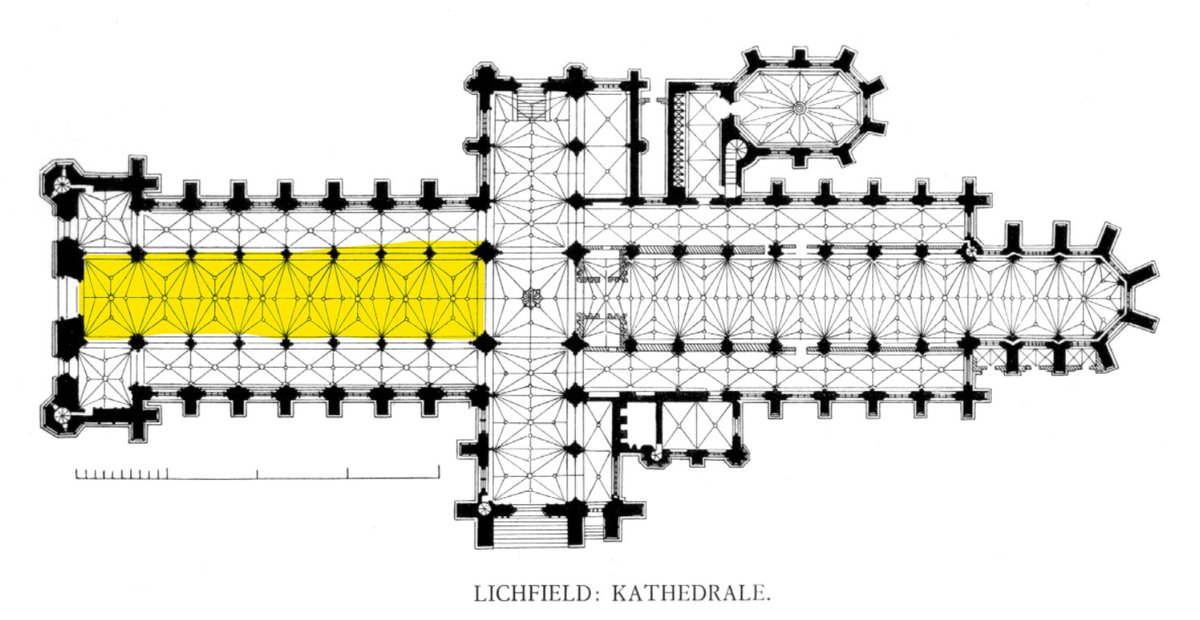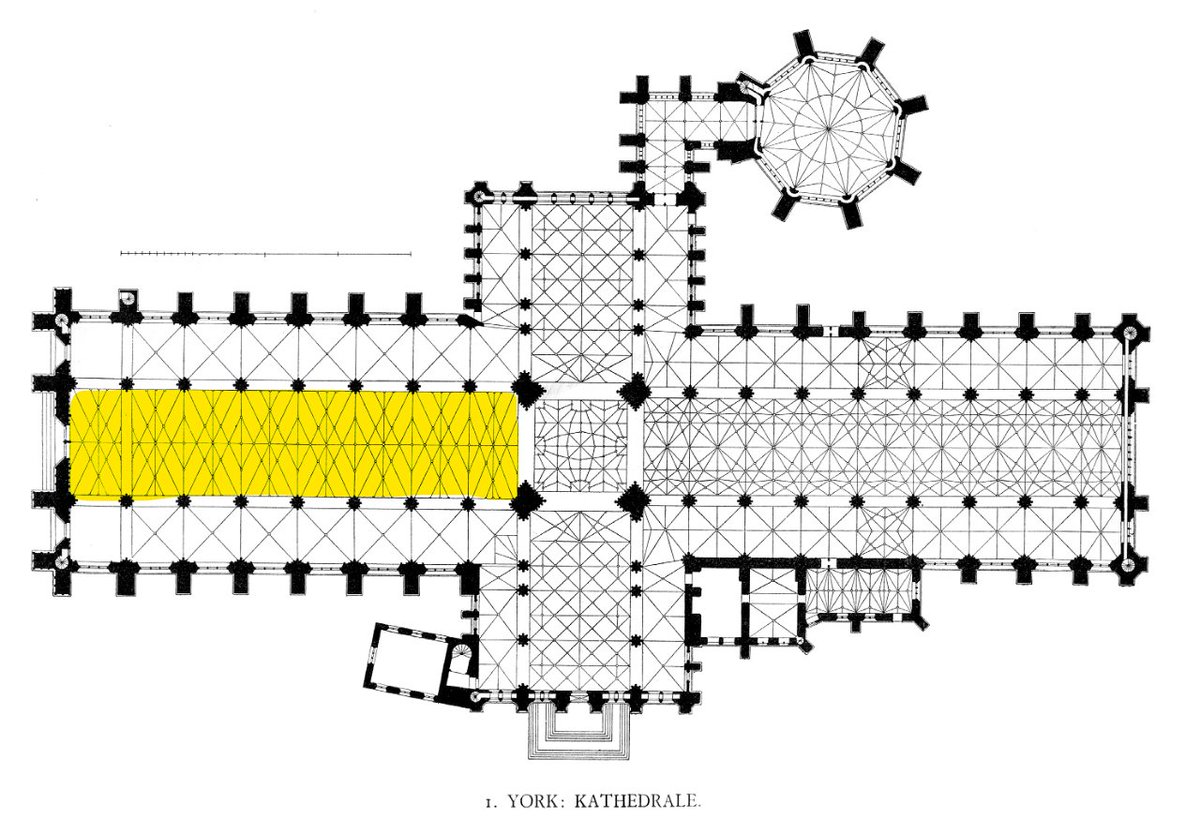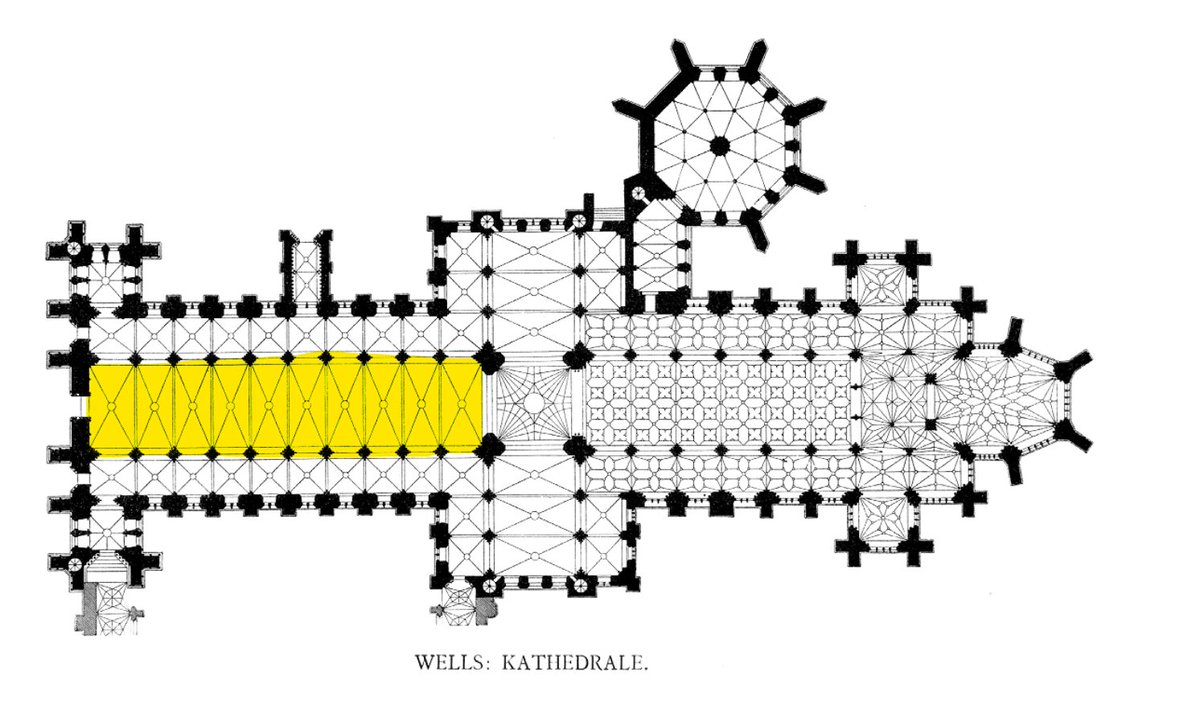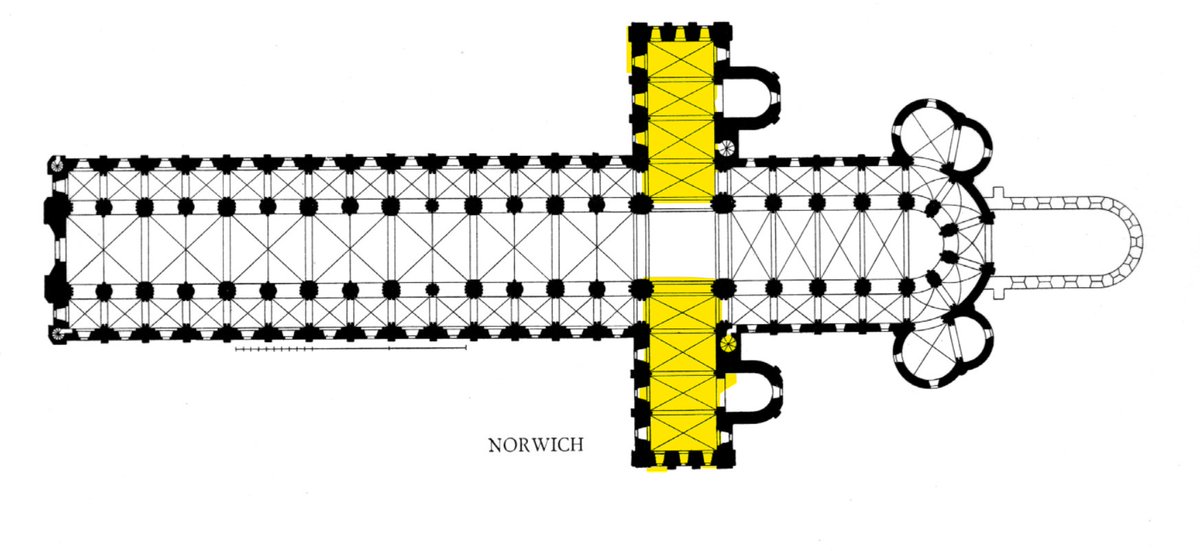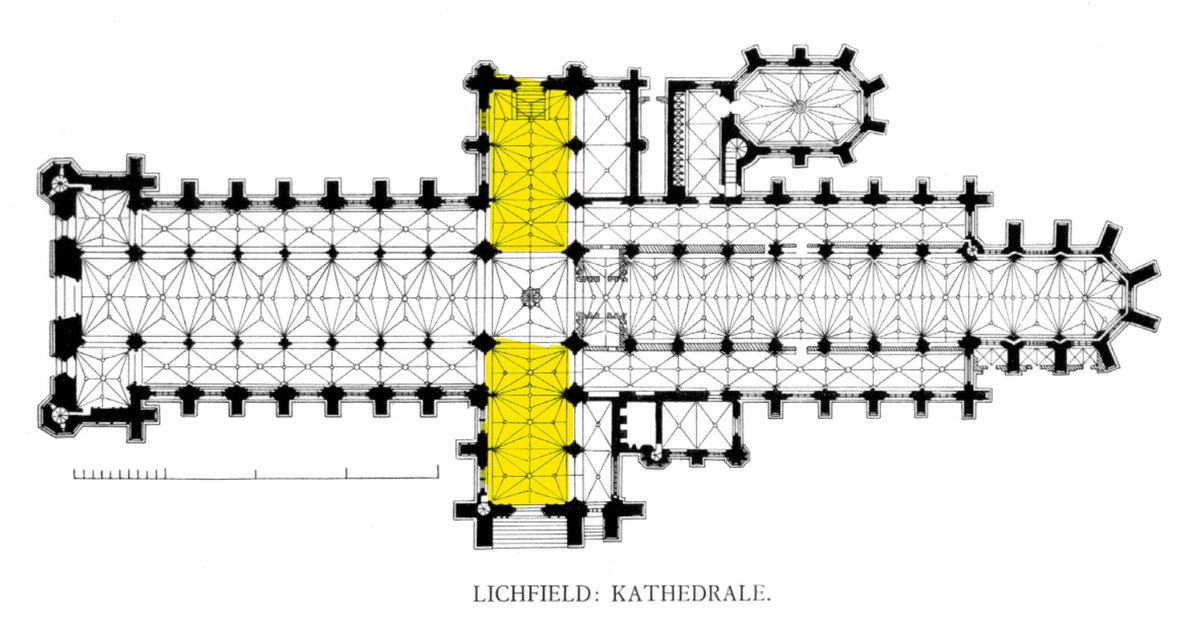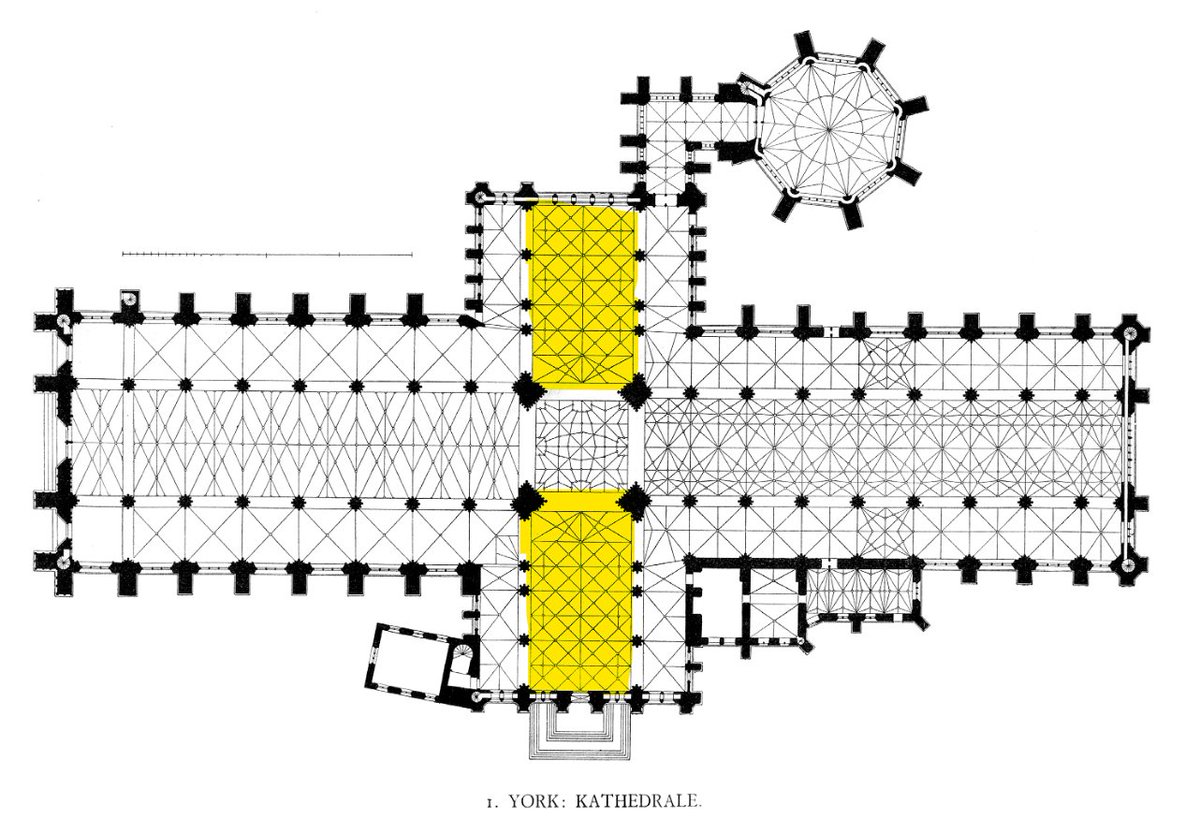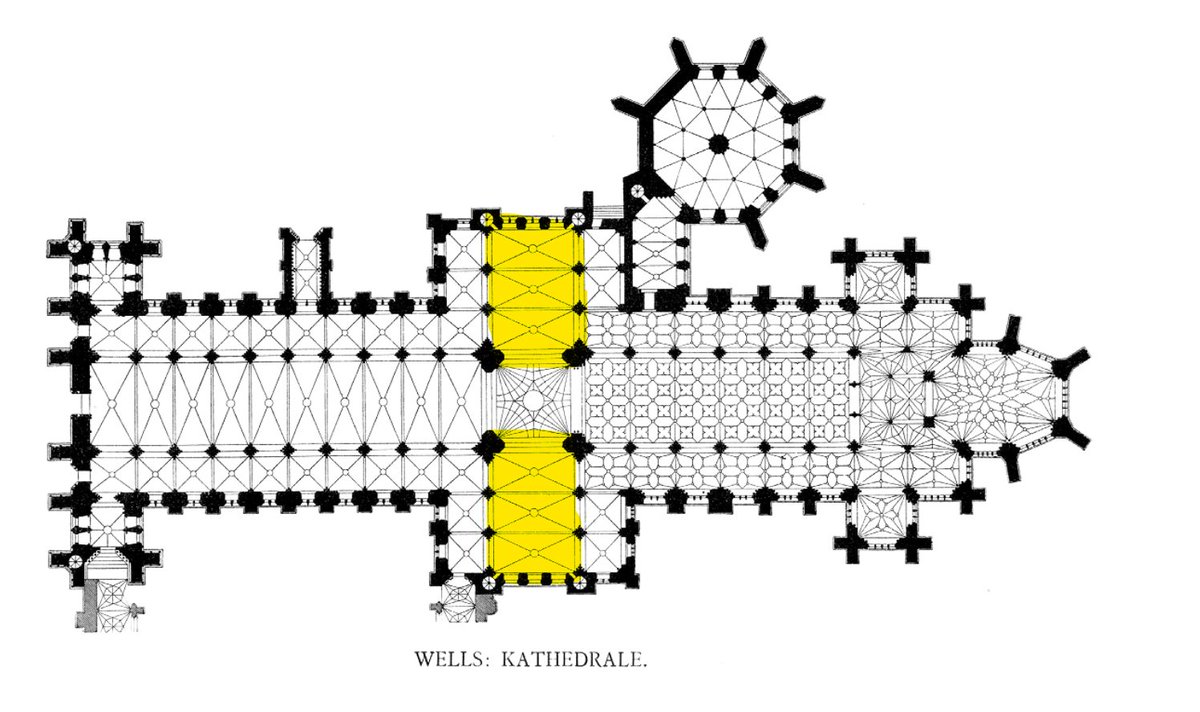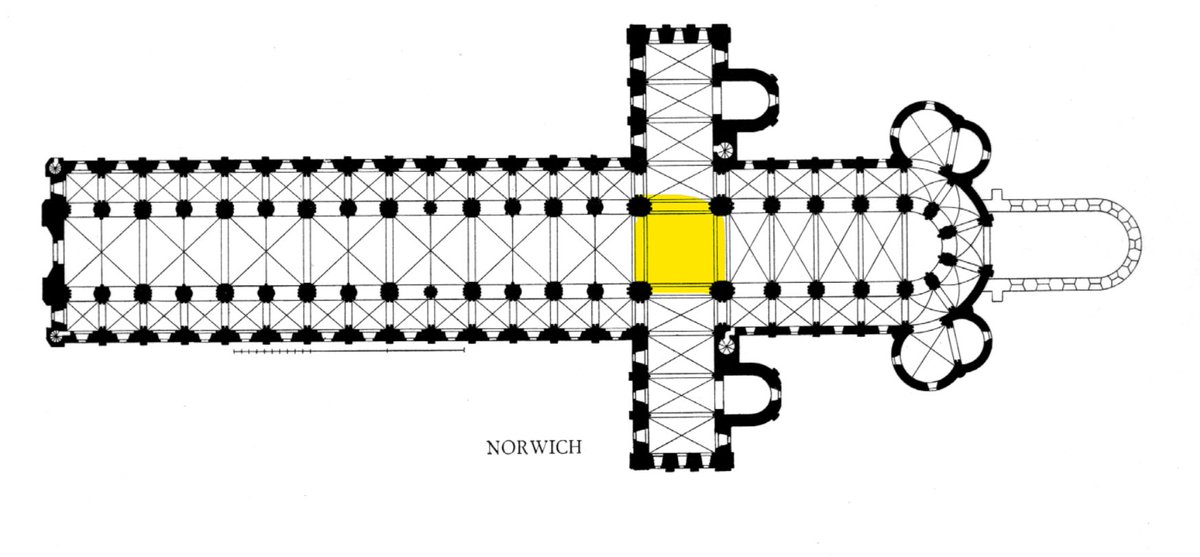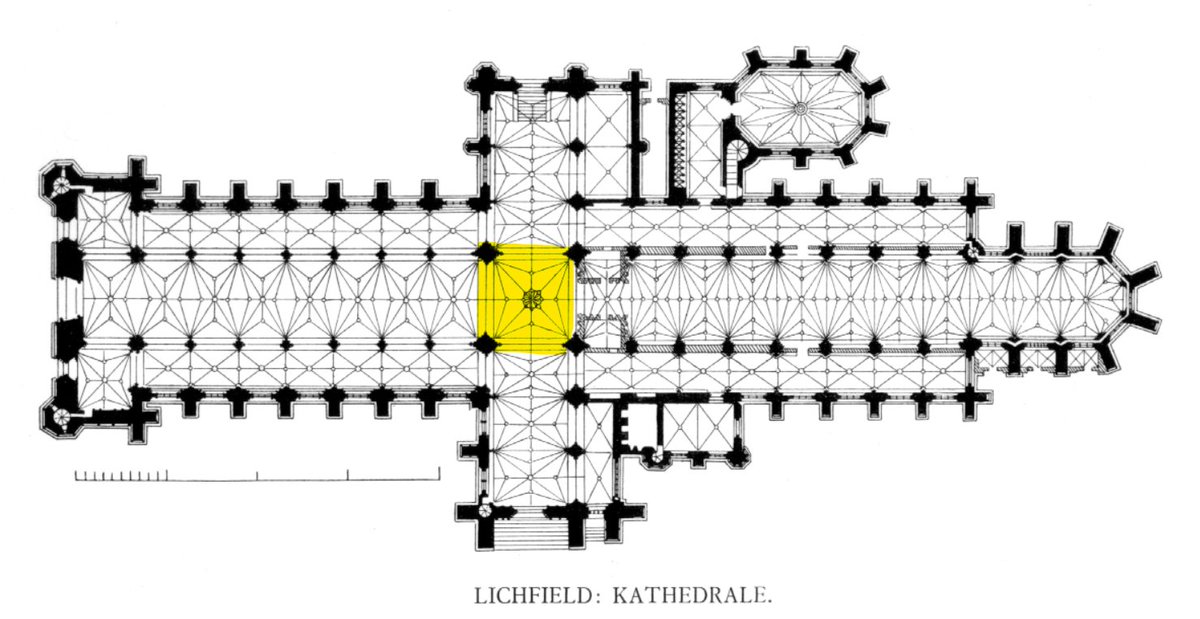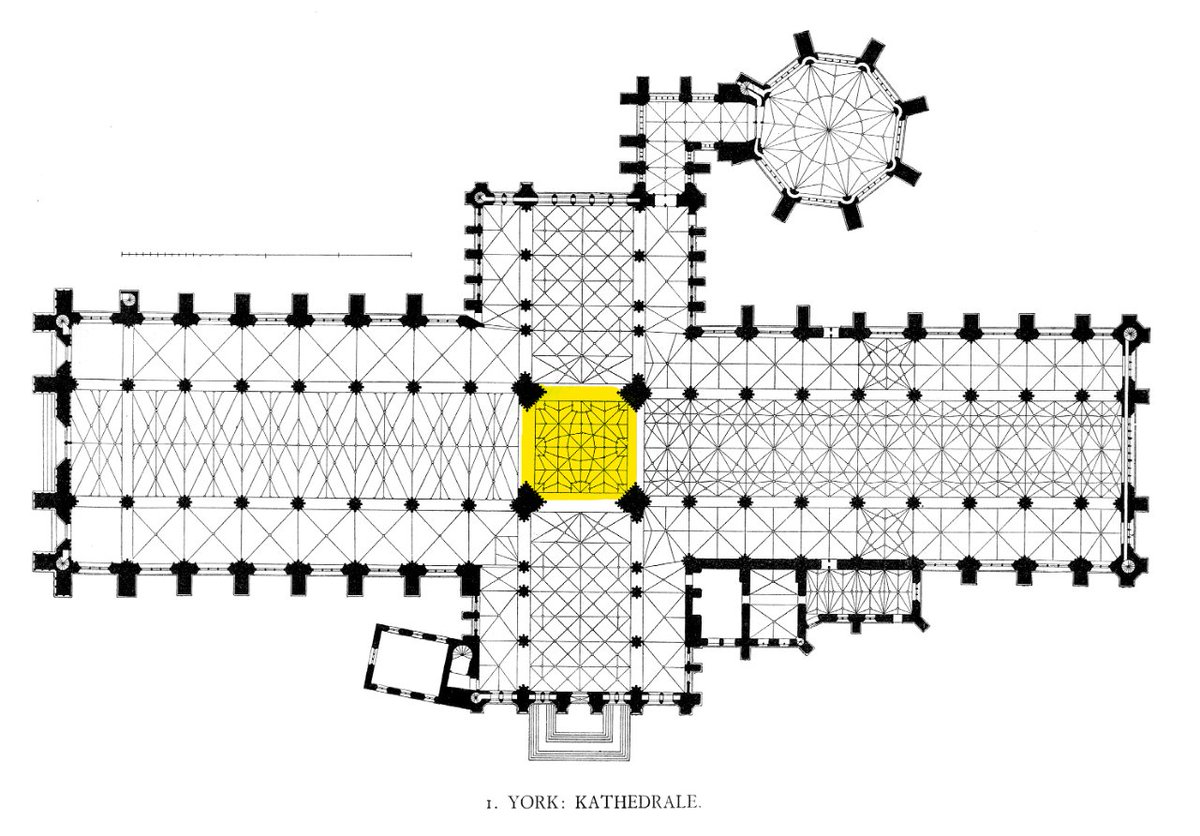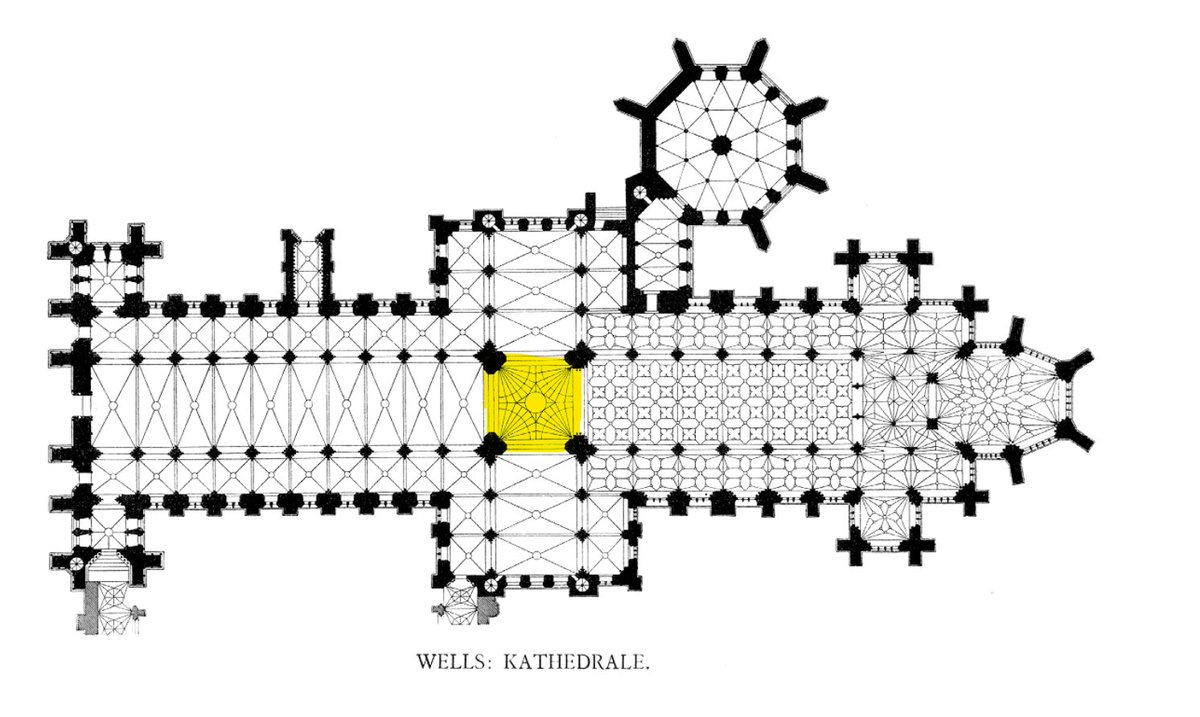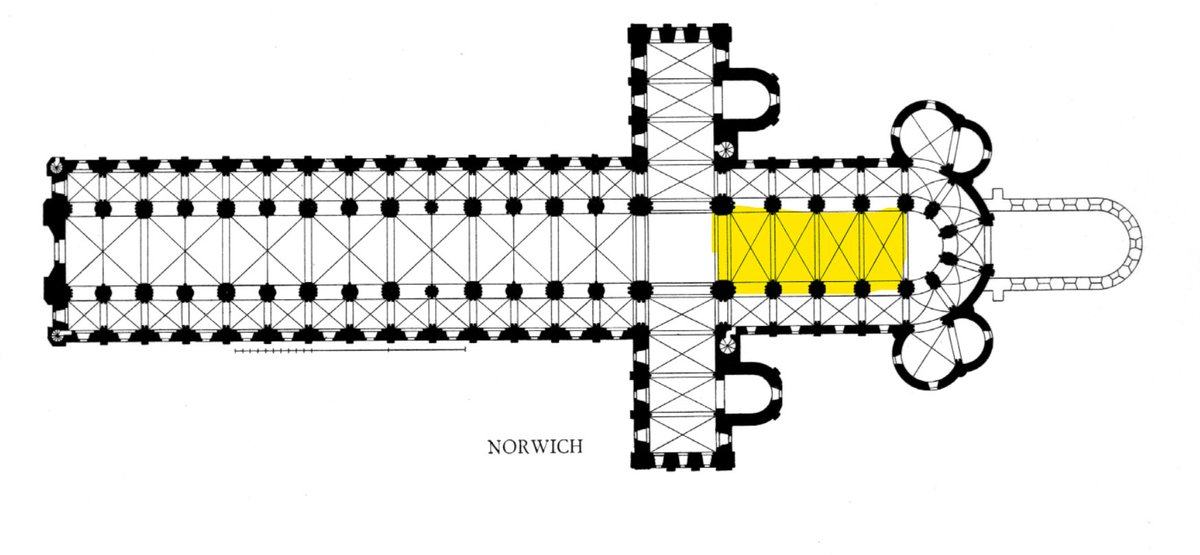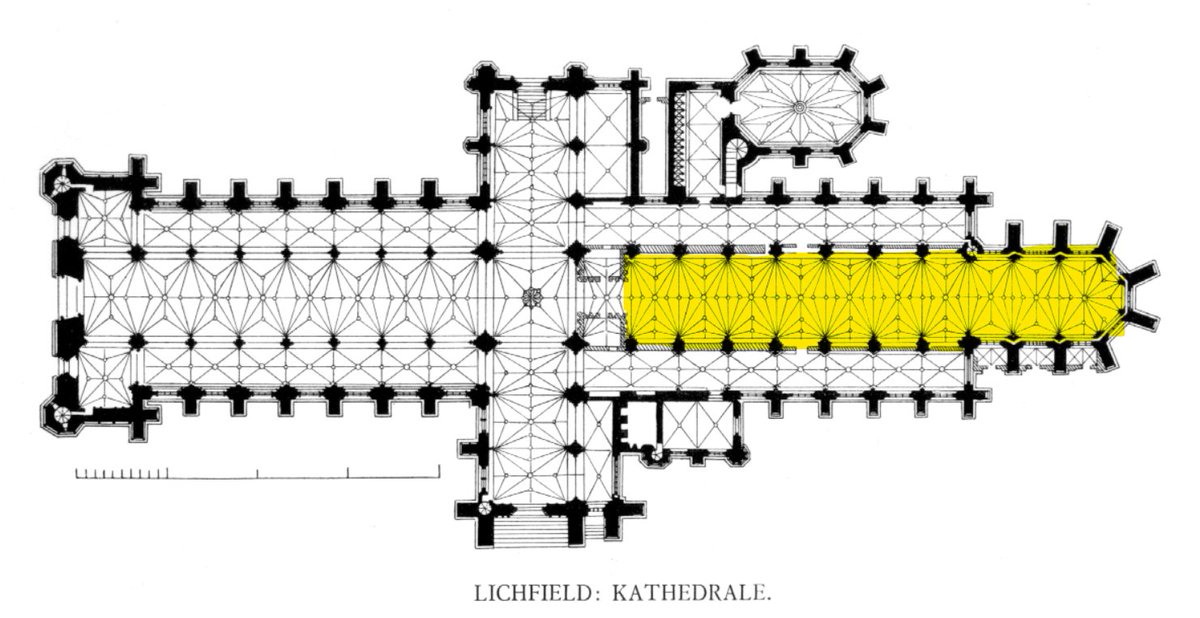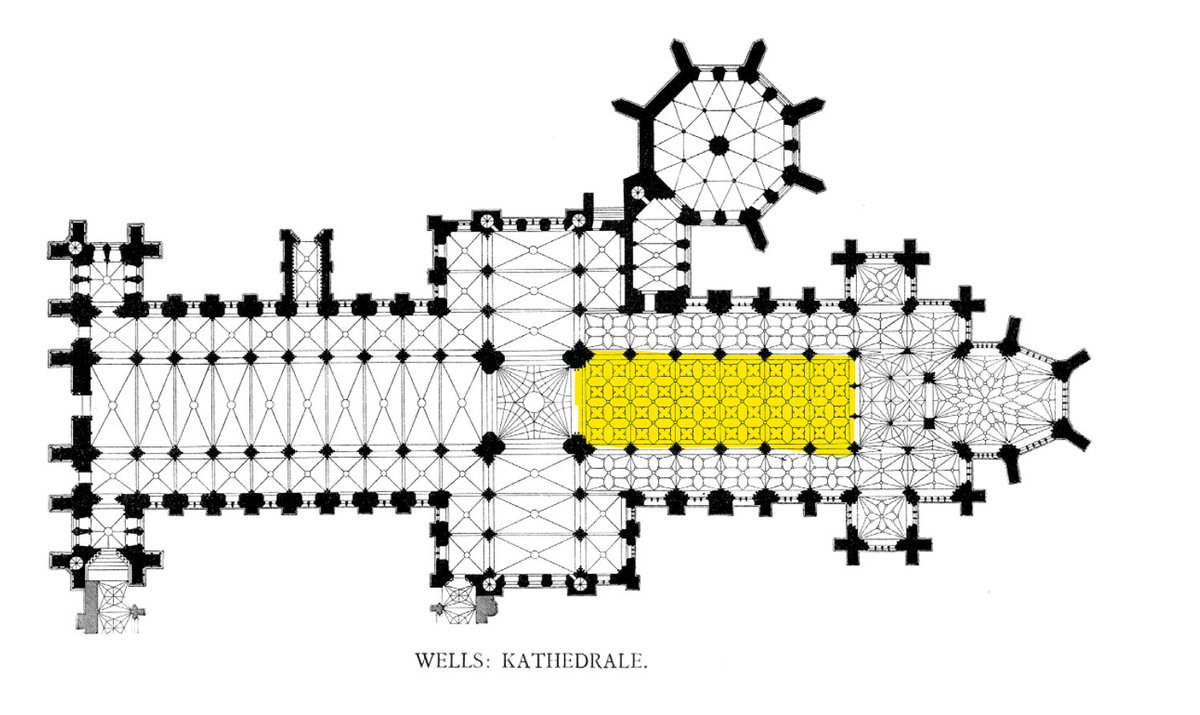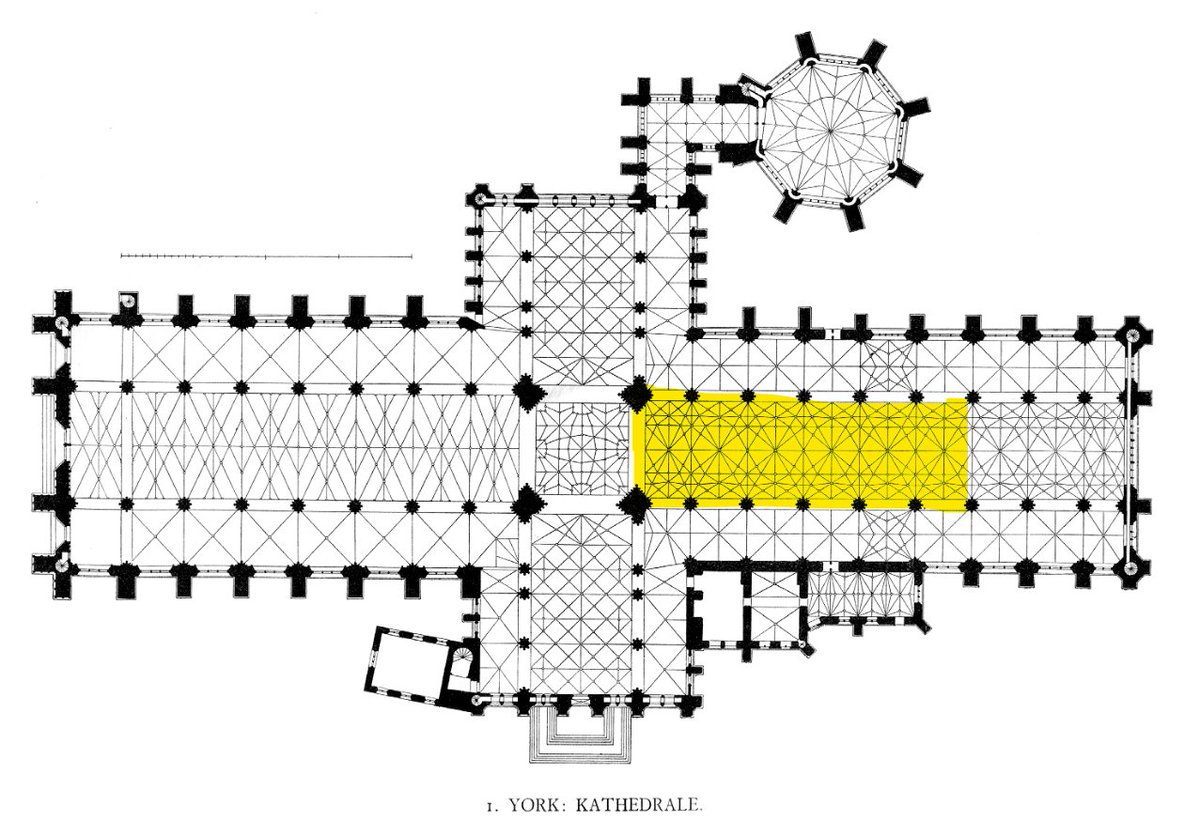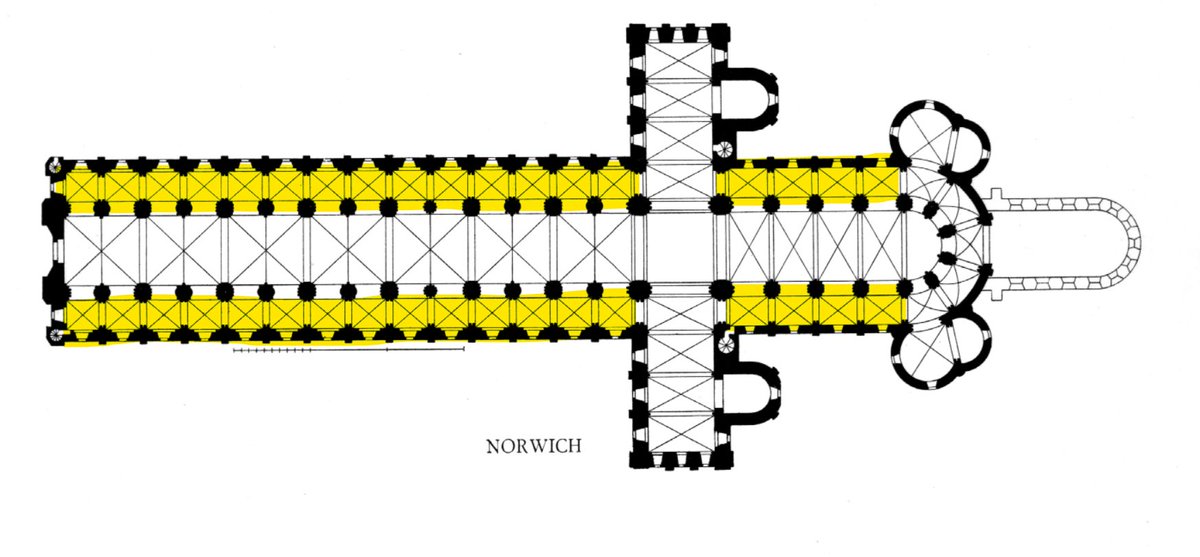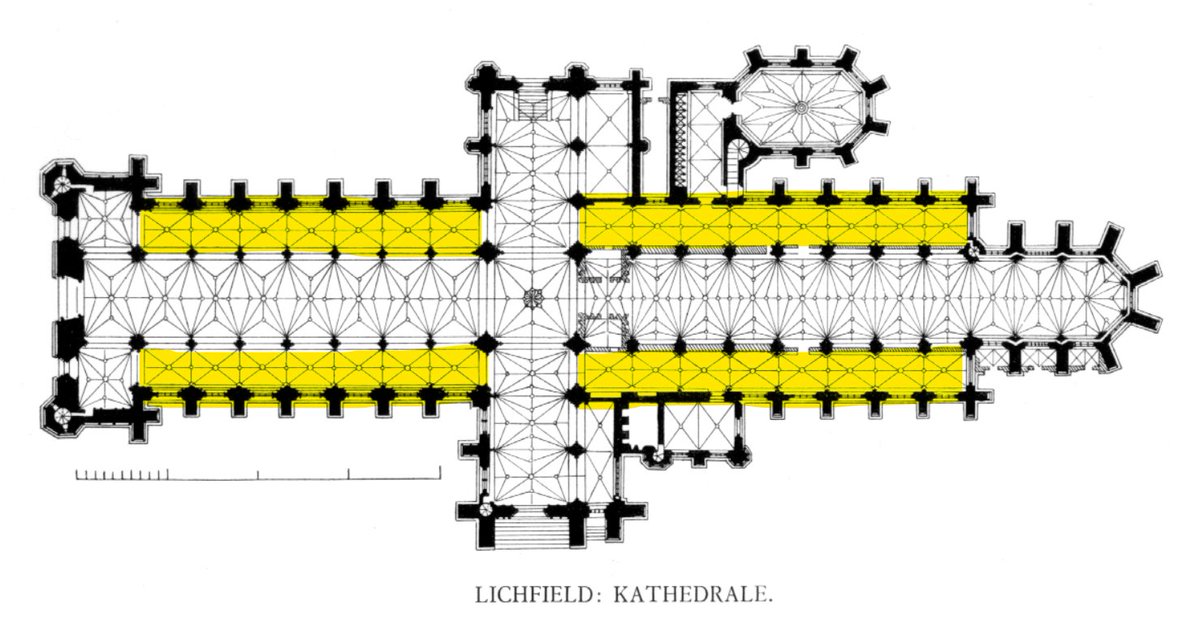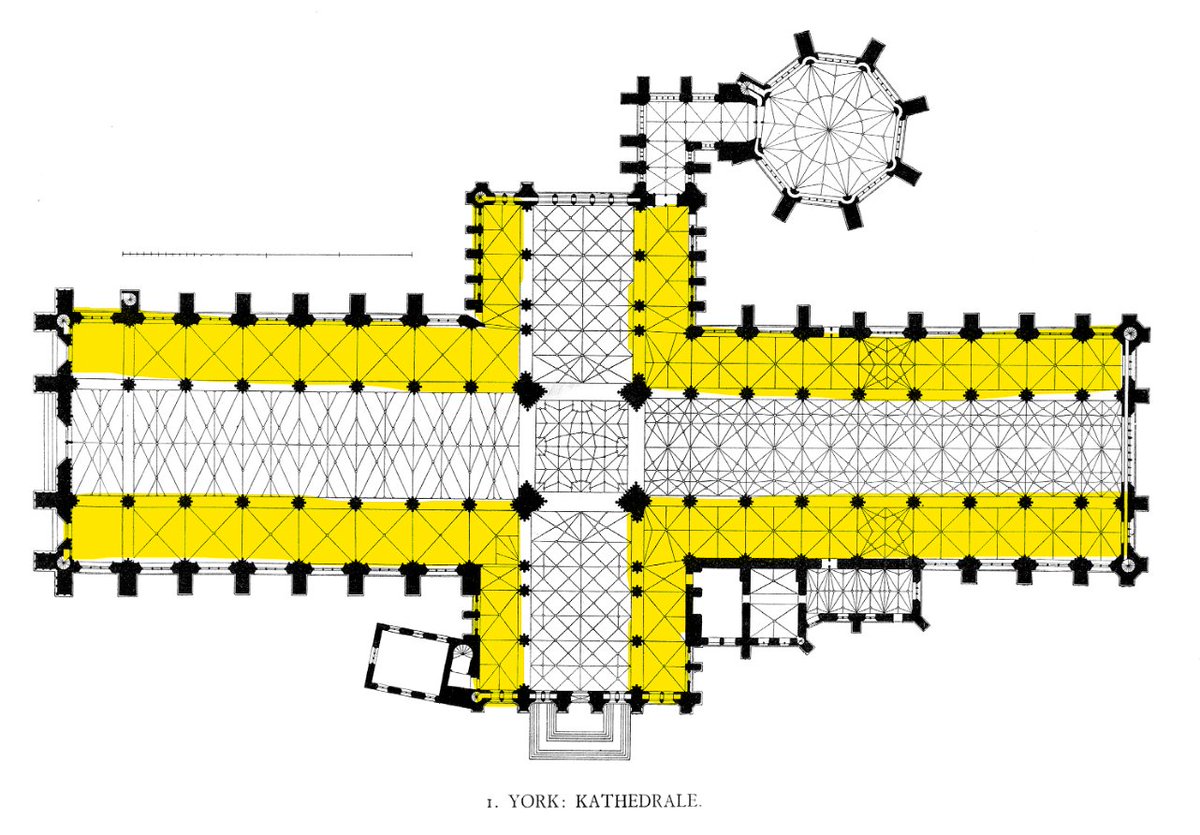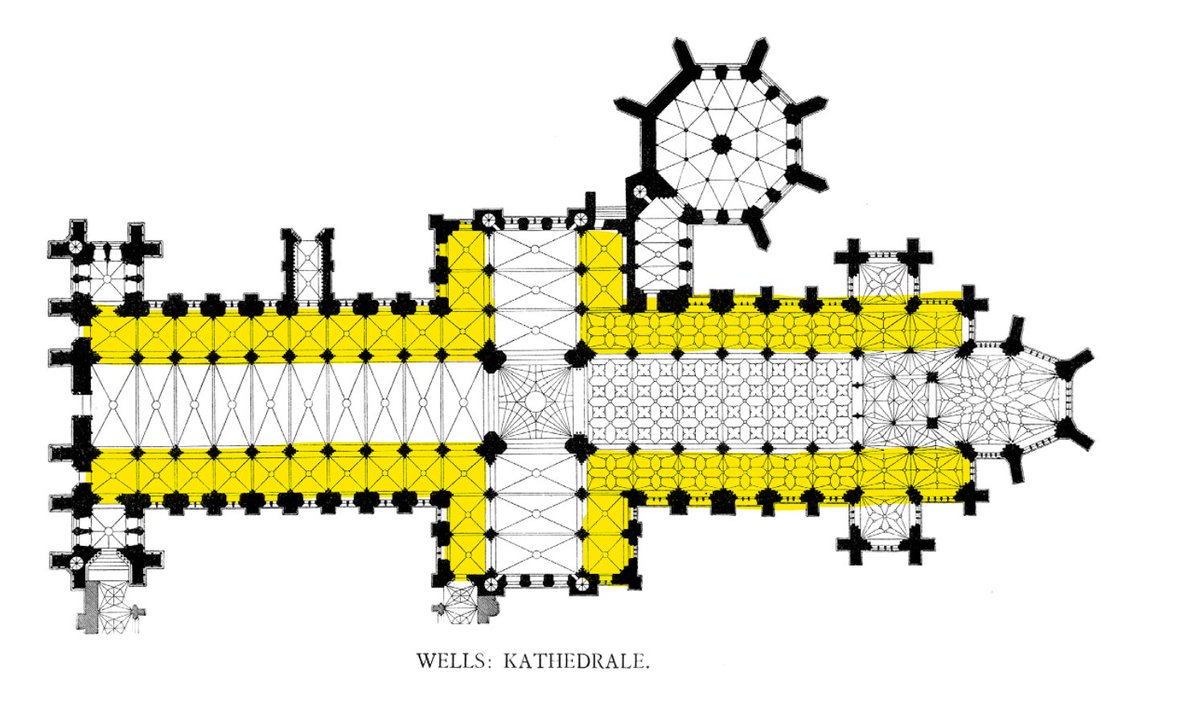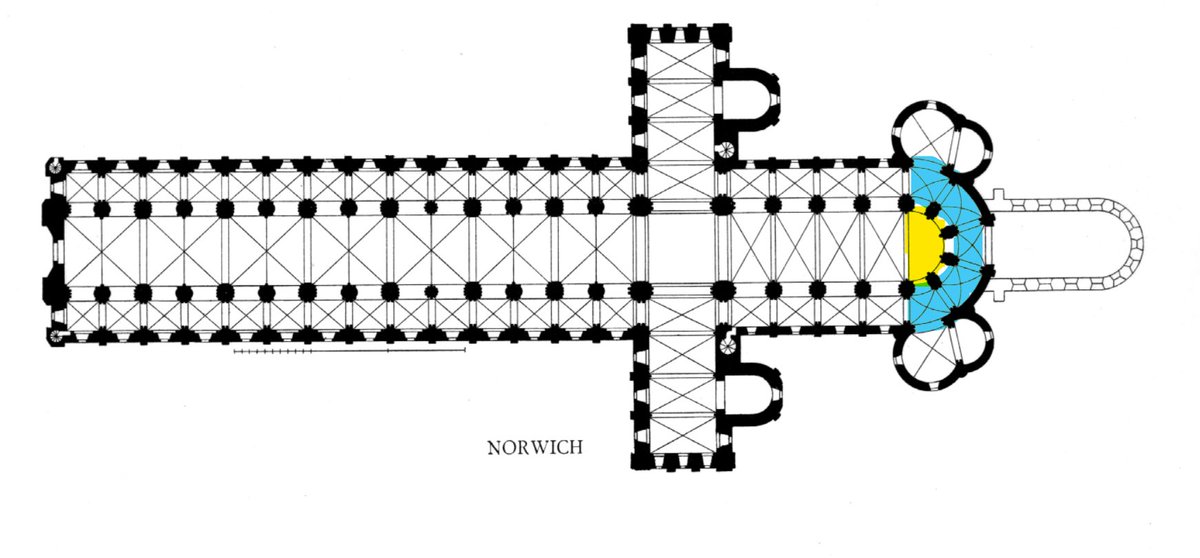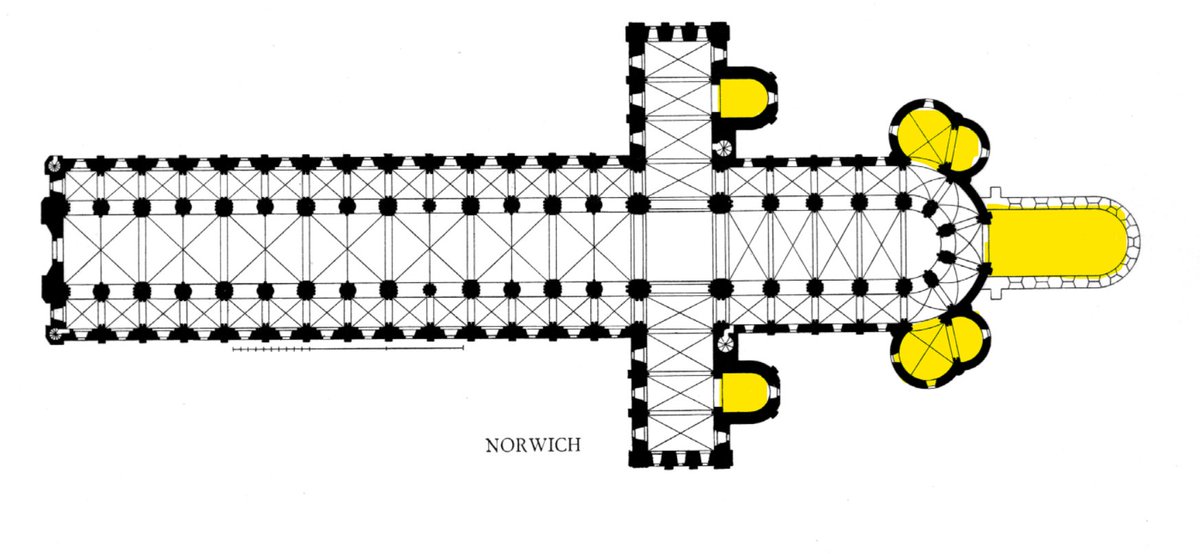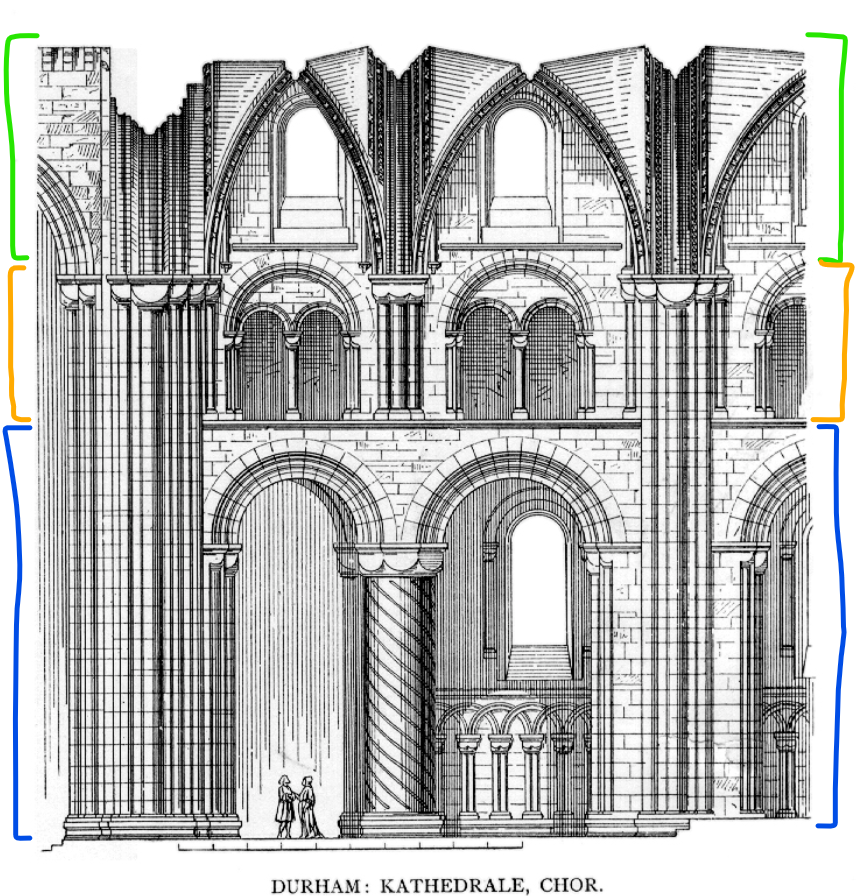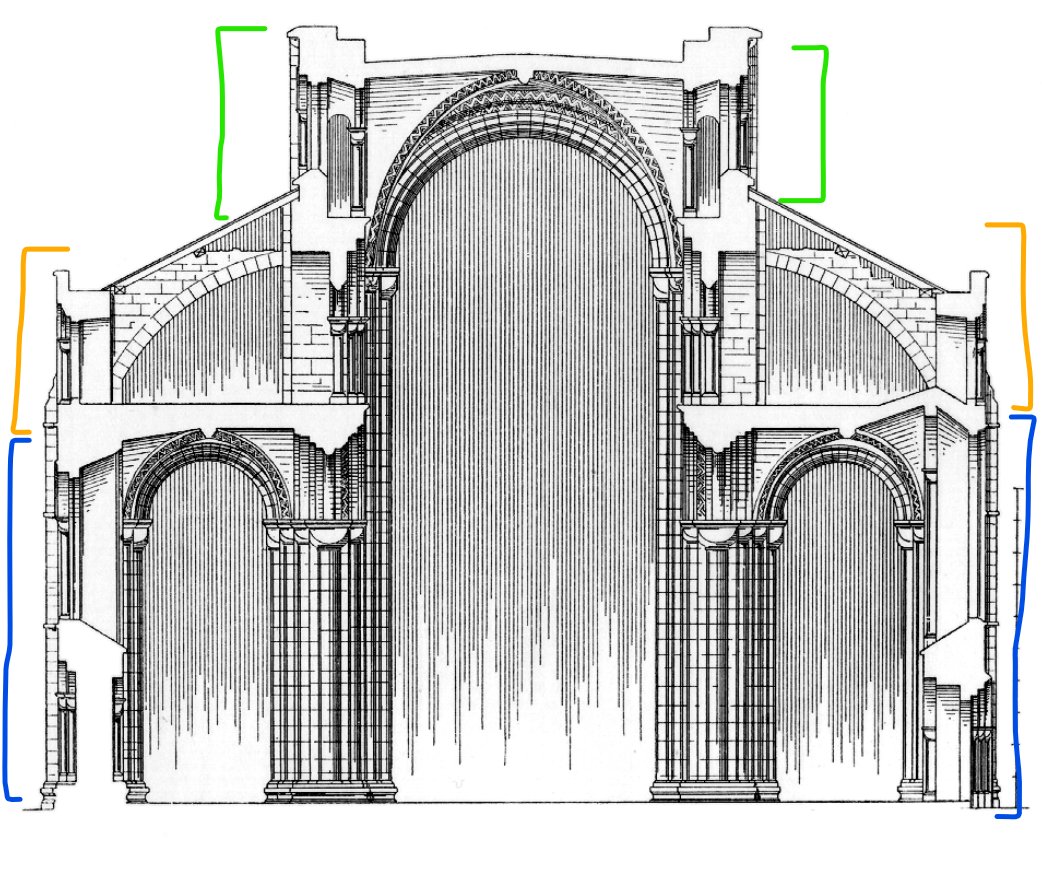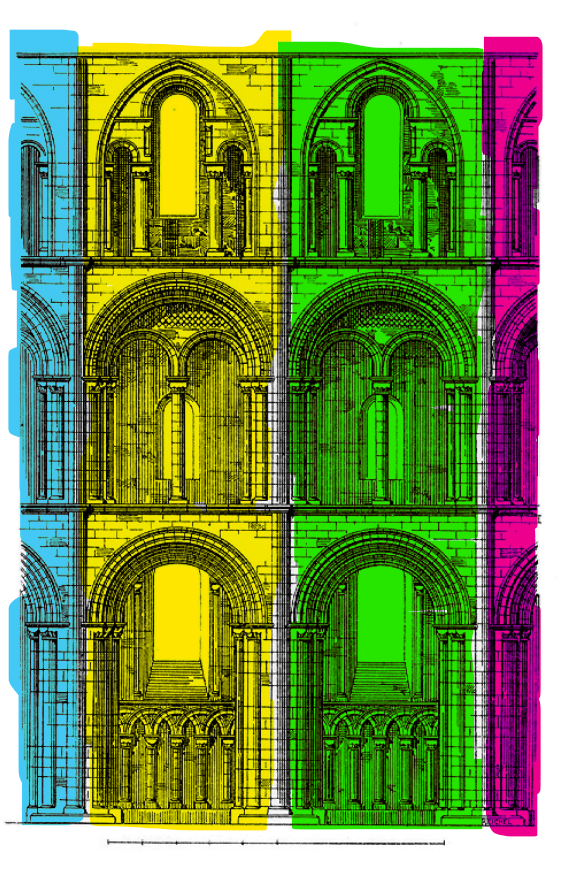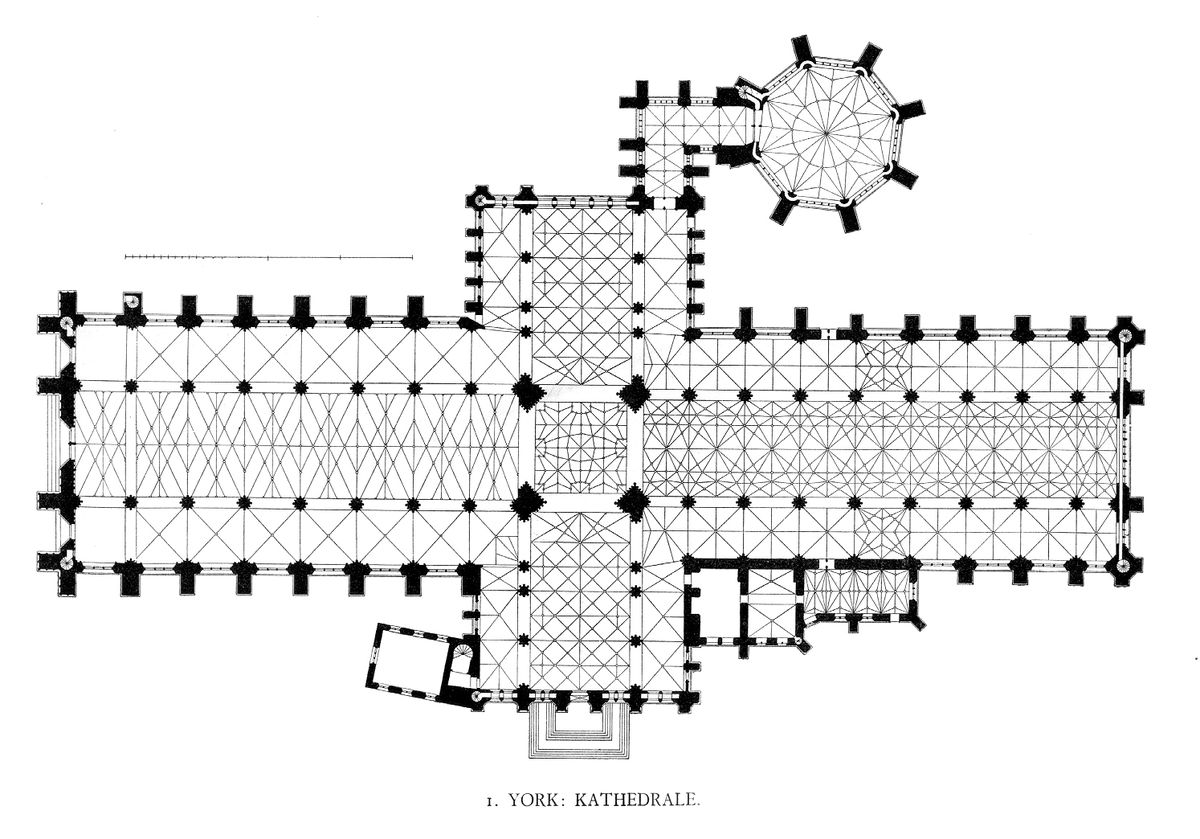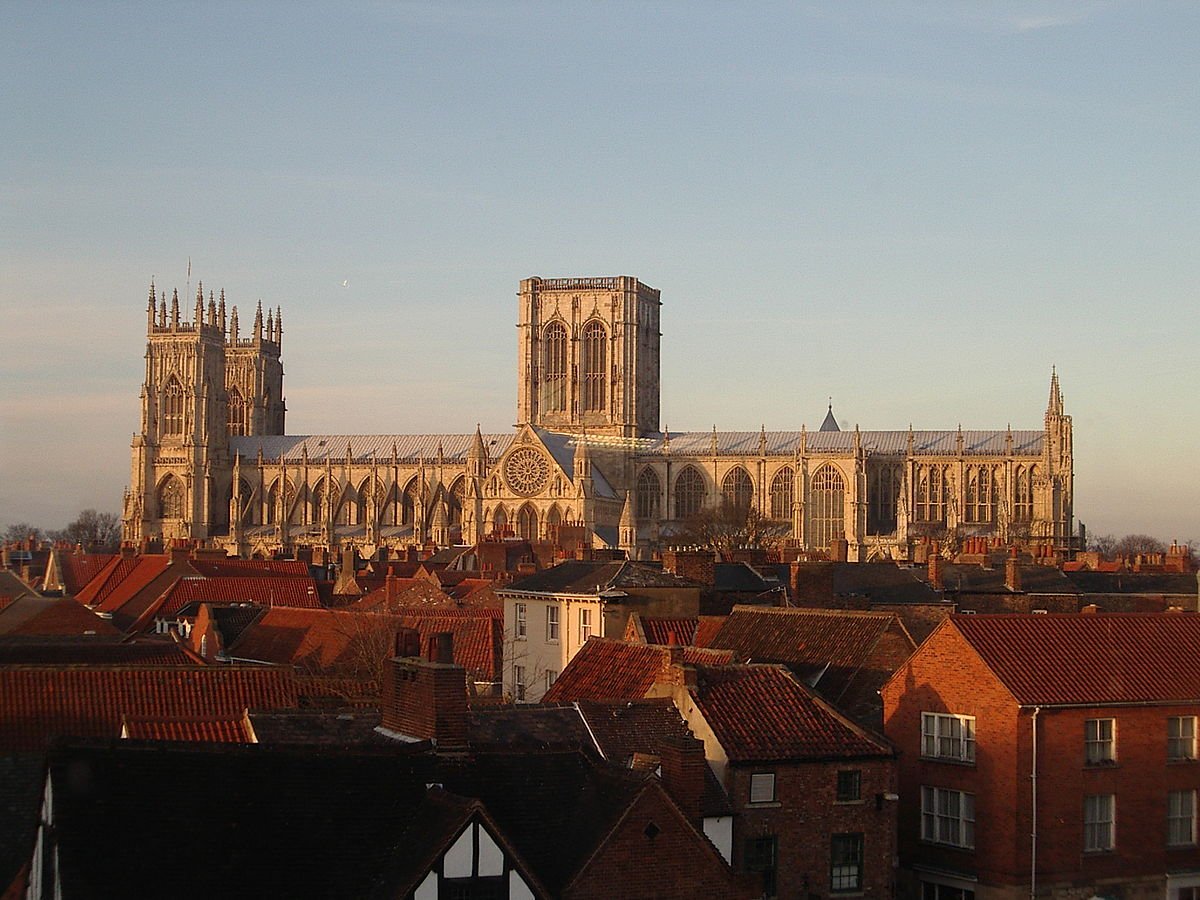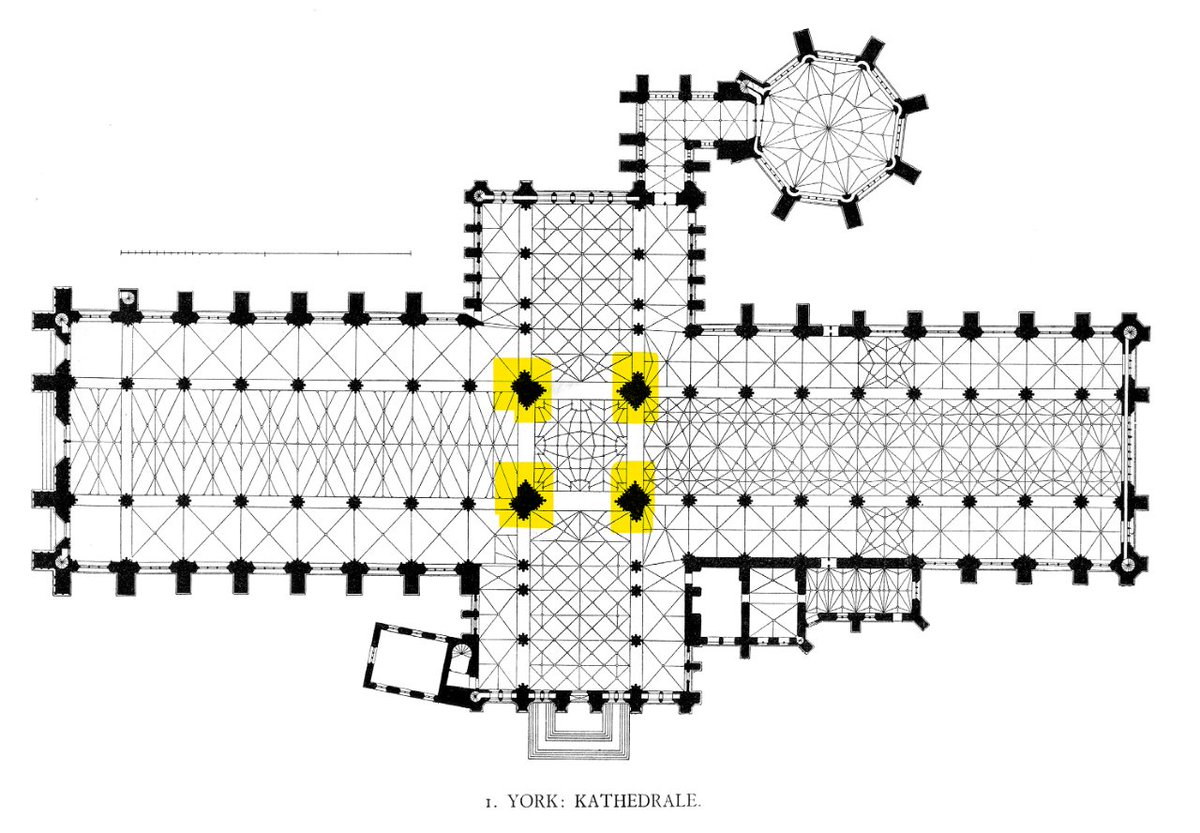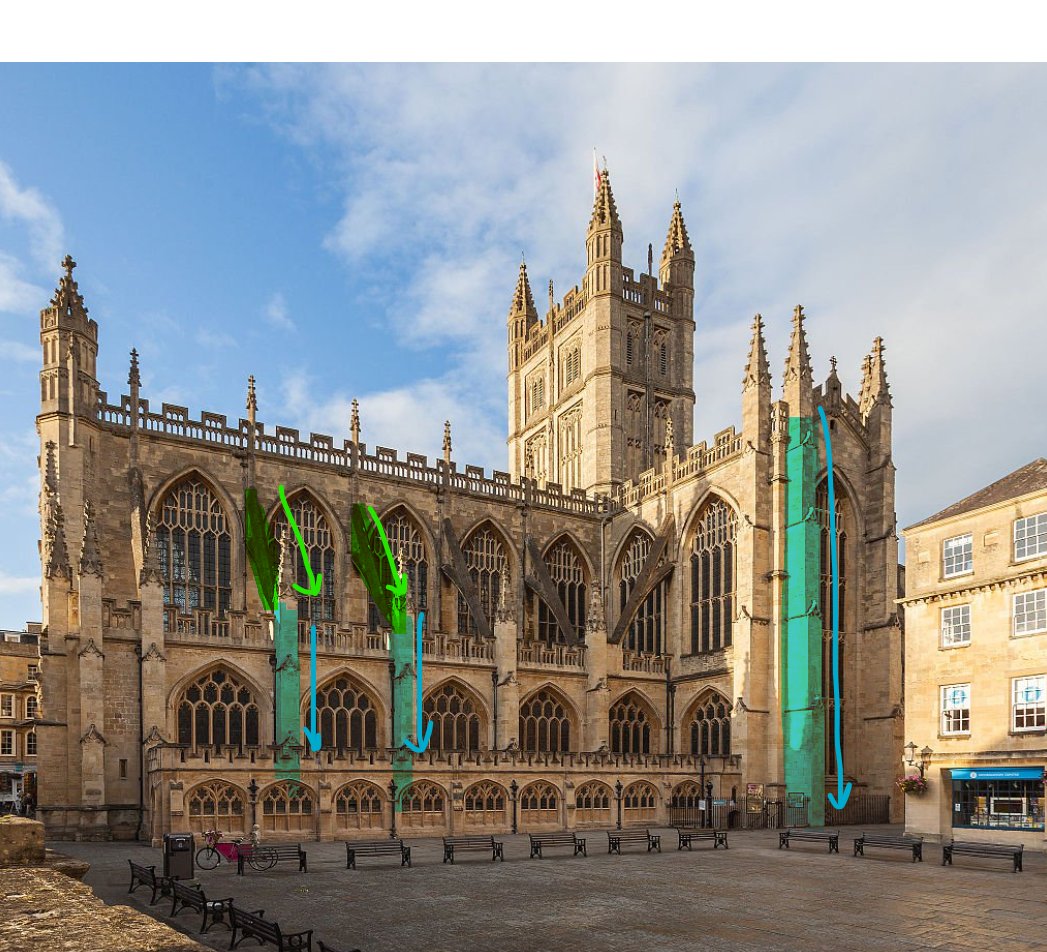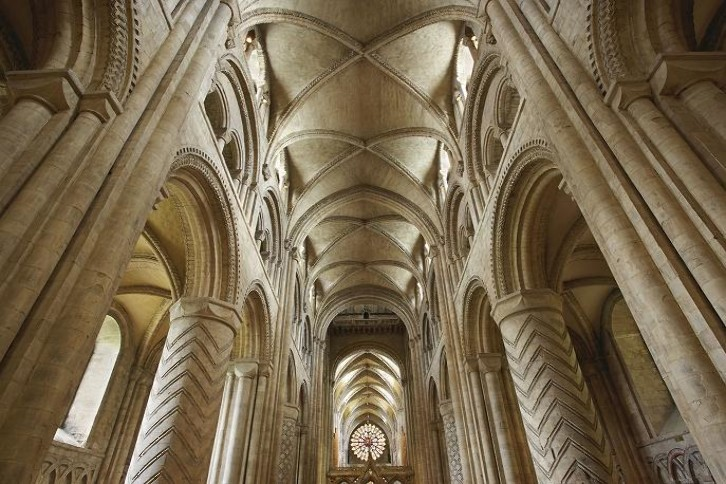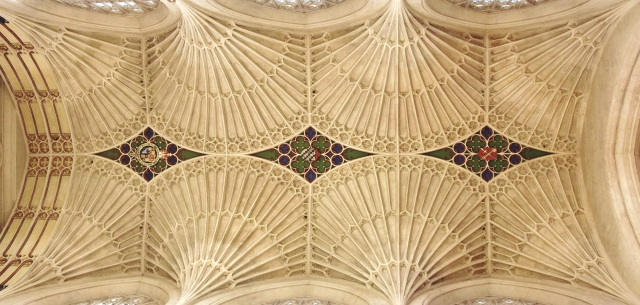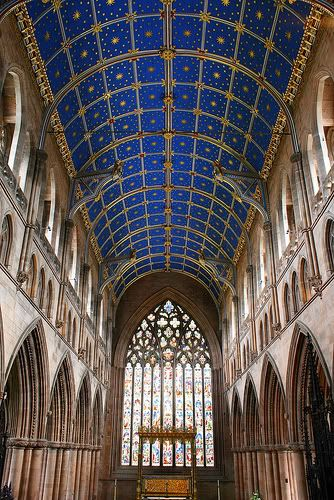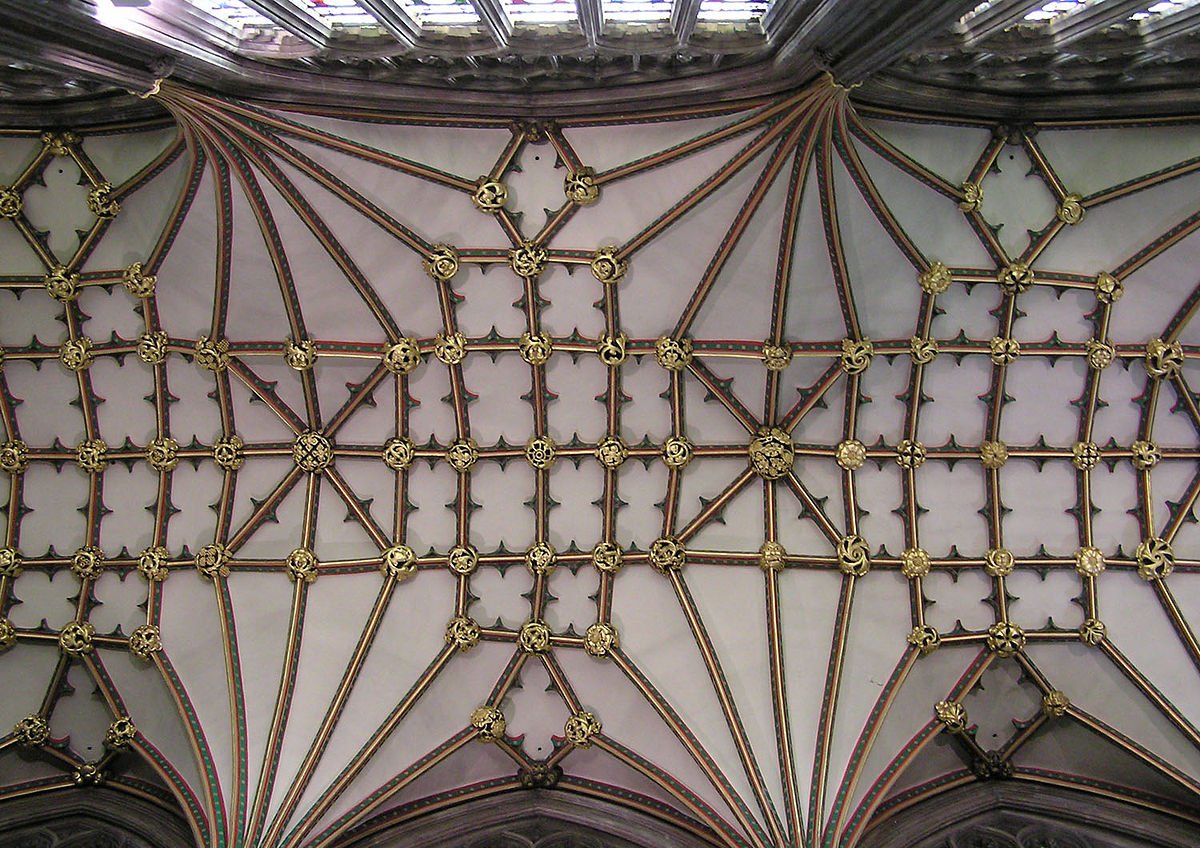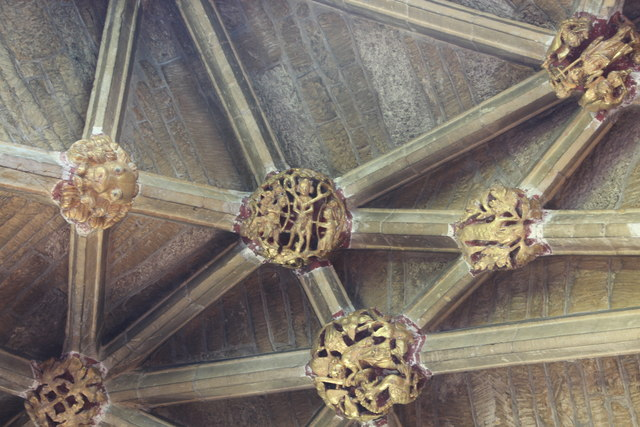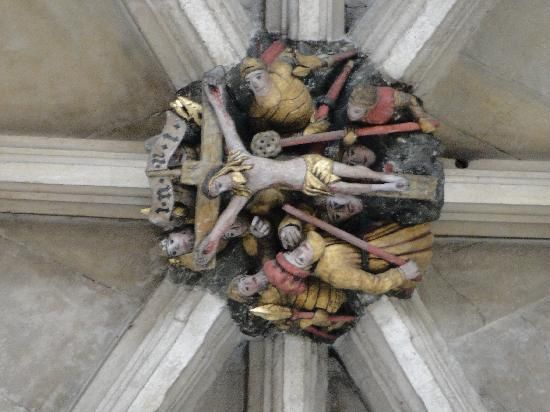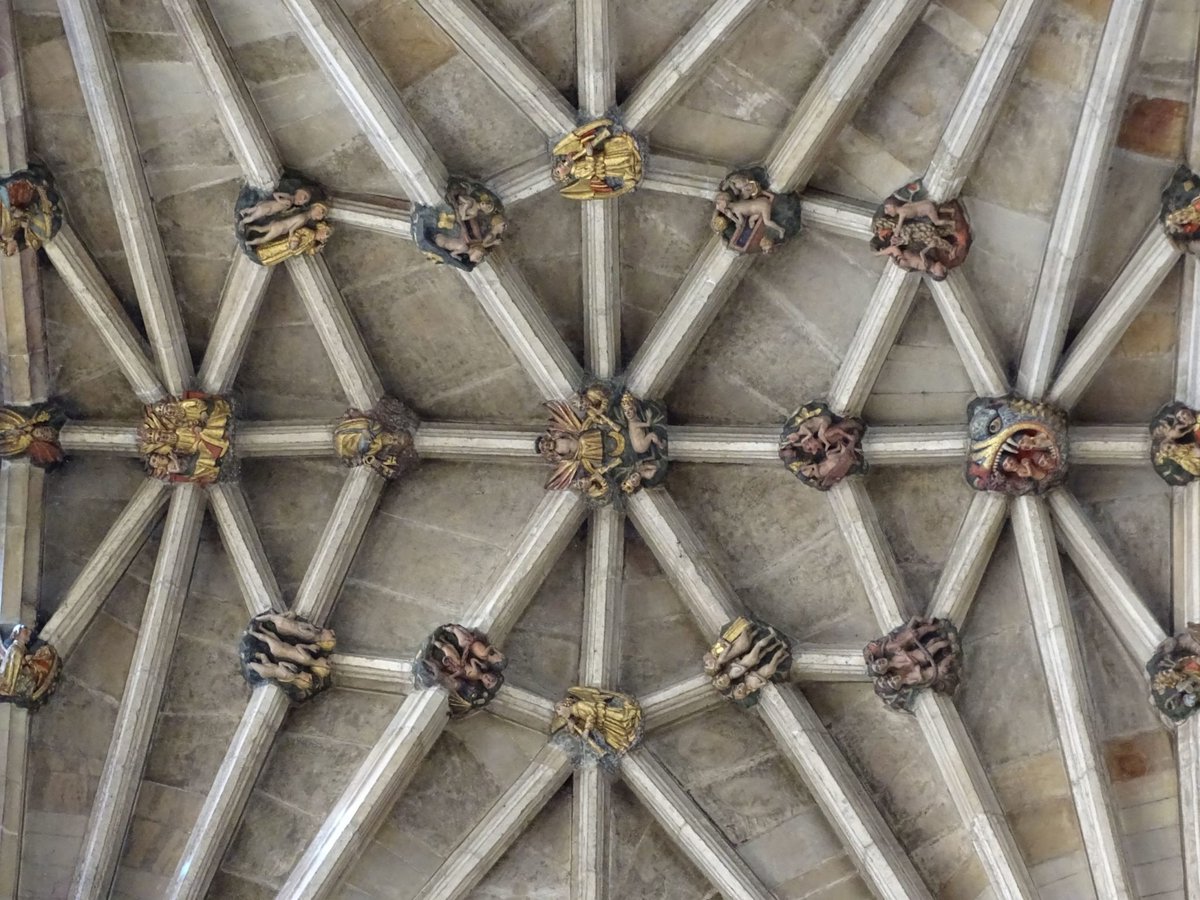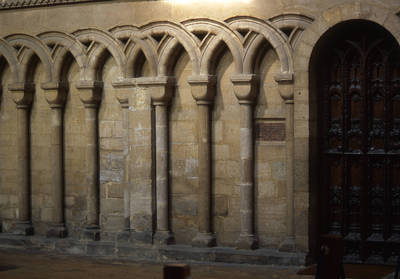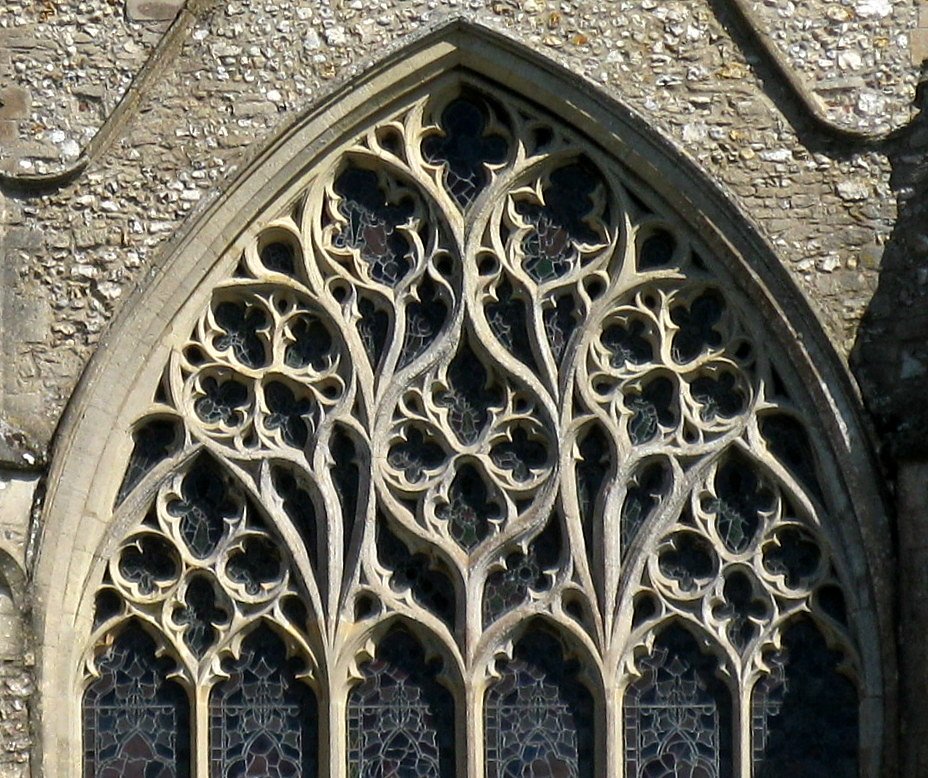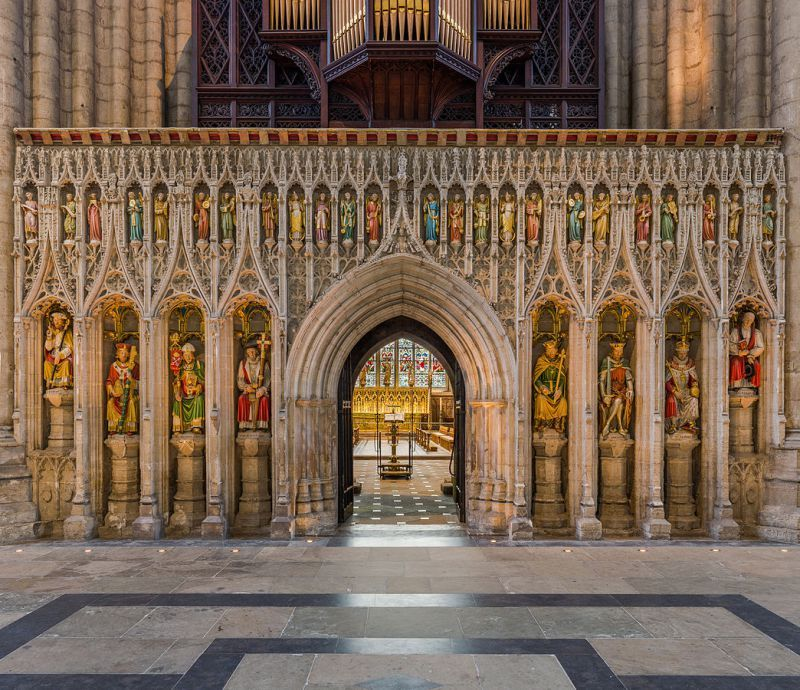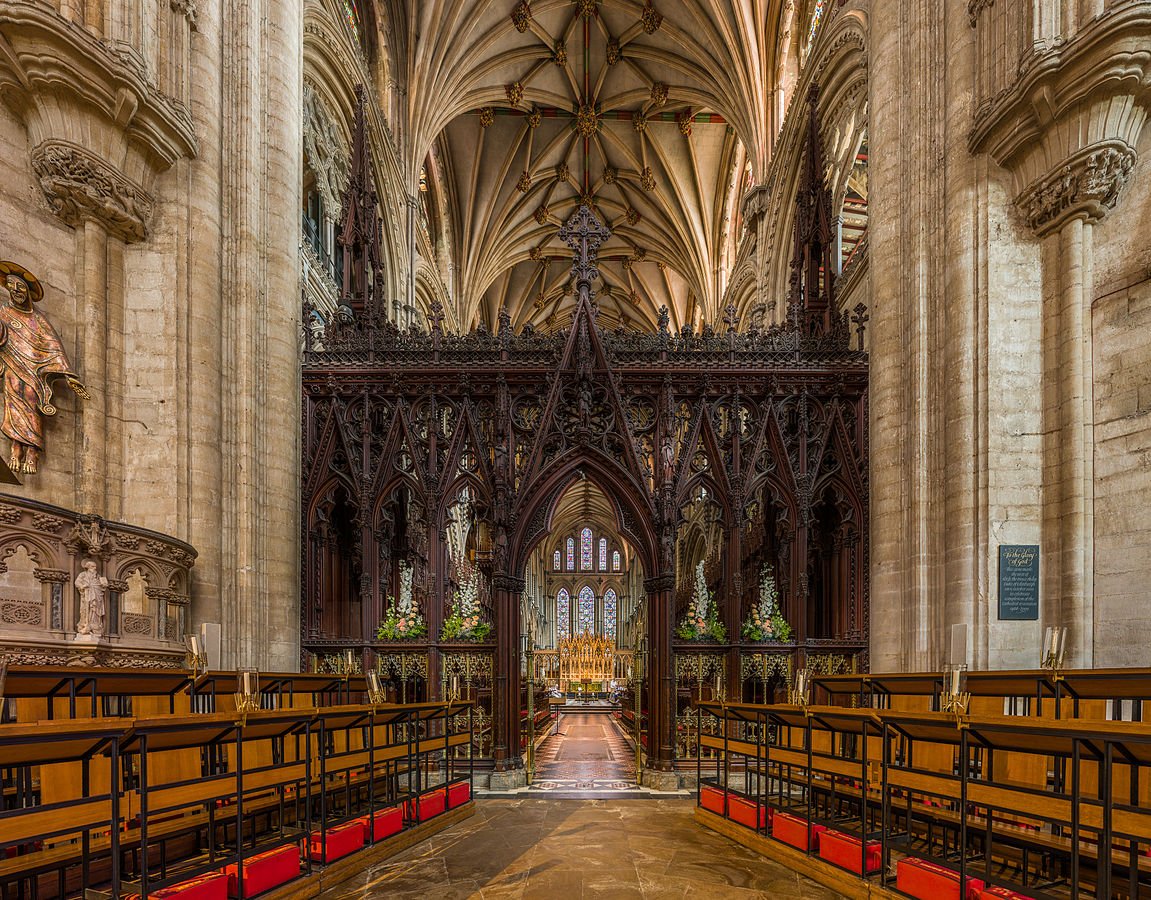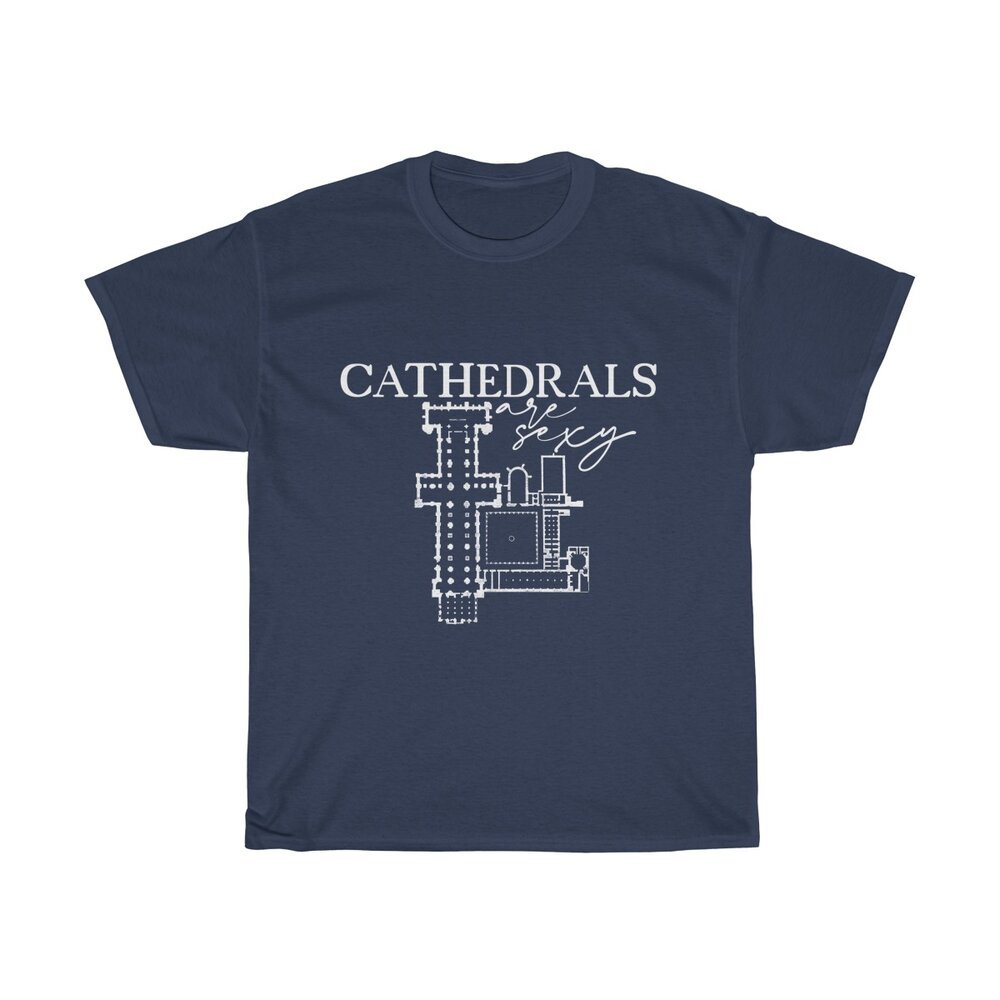I have got you all way too into Cathedrals during the plague, so now I& #39;m gonna teach you some fancy words so when the plague is over and you point at a sexy bit of architecture you can call it by its proper name and seem all knowledgeable and fancy.
Suffice to say, Cathedrals vary WILDLY, twitter is not the best medium for an architectural education, this is a simplified crash course, and I will, of course, be concentrating on England& #39;s Cathedrals because they are my most belovéd.
First, let& #39;s get used to Cathedral floorplans. Cathedrals are complicated buildings, so it& #39;s hard to show everything in a simple diagram. The floorplans show the walls and columns, and then use smaller lines to show the shape of the ceiling vaulting and where windows are.
As you can tell, even within England the layout and shape of cathedrals varies hugely, though there is a lot of similarity. One of the least chaotic layouts is Norwich Cathedral - so let& #39;s start by looking at her, and then we& #39;ll apply that knowledge to the more complicated ones.
First things first - Cathedrals are generally all oriented the same (there are of course exceptions). They& #39;re all a bit off, depending on the restrictions of the site, but they all have a West End, an East End, and their cloisters (if they have them) are to the South.
So! Let& #39;s start naming bits of Cathedrals - I& #39;ll post Norwich first, for that sweet simplicity, and some more complicated Cathedrals too, so you can see how they& #39;re all basically built on the same idea - some are just more complicated (and messy).
To the West of a Cathedral you have the Nave - that& #39;s the big long bit that often has pews in it.
Running from North to South and cutting through the traditional "cruciform" (cross shaped) English Cathedral are the "Transepts" (North and South). Sometimes English Cathedrals have two of these, because we& #39;re extra, don& #39;t worry about it.
Where the Transepts meet the rest of the church is the Crossing - above this is the tower, or in the case of a Cathedral like Ely, a Lantern. This area can have a number of different names depending on what& #39;s above it, but people will know what you mean if you say "The Crossing"
Now we head into the East End - and this is where things get tricky. Some Cathedrals have bits others don& #39;t, and everything has a million different names depending on complicated criteria. BUT - this is a basic crash course so you don& #39;t need to worry about all that.
The Big Words you& #39;re gonna want to know when it comes to talking about the East End of a Cathedral are "Chancel" and "Quire" ("Choir" if you& #39;re basic).
The Chancel can be used to refer to the whole East end of a Cathedral, but technically it& #39;s the area containing the Quire (the area of seats where the Choir sit) and the Altar. I& #39;ve highlighted the SPECIFIC definition of Chancel in the diagrams.
So... what& #39;s all the other stuff? Well! There& #39;s the Aisles - sometimes Cathedrals have them in the Transepts, sometimes they don& #39;t. Sometimes the ones in the Transepts have been turned into Side Chapels with the addition of walls (we& #39;ll get to those in a sec).
Now, you might have noticed Norwich Cathedral has a fancy curvy East End - they& #39;re much more common in Europe than in England, but let& #39;s learn the right words for it, eh?
The Yellow bit is the "Apse" and the (blue) corridor running around behind it is the "Ambulatory"
The Yellow bit is the "Apse" and the (blue) corridor running around behind it is the "Ambulatory"
What are Side Chapels? They& #39;re just little spaces with altars for you to go and pray more quietly and privately. They& #39;ve got lots of names, "Lady Chapels" "Galilee Chapels" and some are dedicated to local military regiments, etc, but they all fall under the same heading.
OKAY! So that& #39;s Cathedral floor plans sorted - if anyone is still reading this thread we& #39;re gonna go INSIDE the Cathedral now and learn the names for more specific stuff, not just areas. Let& #39;s go!
Vertically, Cathedrals generally come in three stages. The Top level (in green) is the "Clerestory", the second (in orange), which sometimes has windows and sometimes doesn& #39;t, is the "Triforium", and the level you walk about in (in blue) is the "Arcade".
You& #39;ll notice Cathedrals are made up of sections, these are called "Bays" - I& #39;ve made each one a different colour so you can really see what& #39;s going on.
Another thing you might notice when you& #39;re inside a Cathedral is that there& #39;s a LOT of columns, but also that not all columns are made equal...
As you can see from this floorplan there& #39;s a LOT of Cathedral, containing a lot of space, and a lot of windows, but not a lot of contact with the ground.
Cathedrals are great big balancing acts, with the weight of tonnes of stone funnelled down to rest on very small points.
Cathedrals are great big balancing acts, with the weight of tonnes of stone funnelled down to rest on very small points.
Thanks to buttresses (we& #39;ll get to them soon), you can balance a lot of stone on what seems like almost no wall - but that doesn& #39;t work when you want to stick a huge tower over open space - like almost all Cathedrals in England do. You& #39;ve got to hold that tower up SOMEHOW, right?
That& #39;s where Piers come in. They& #39;re the columns highlighted in Yellow. As you can see, they& #39;re much bigger than all the other columns in the Cathedral, and they carry the vast weight of the tower, helping it sit, almost magically, over the vast open space of the crossing.
Buttresses are integral to the balancing act Cathedrals do - they take the weight of the walls and the roof and funnel it to the ground, allowing for walls with huge windows, and vast open spaces.
Flying buttresses are just a lighter and prettier way of moving weight from the higher stories of buildings. Here you can see how the Flying Buttresses (in green) funnel the weight down to the normal buttresses (in blue), which then take it to the ground.
There& #39;s a hundred different types of ceiling and I& #39;m not gonna get into that here, but basically cathedrals generally have "vaulted" ceilings. The main types are "Rib Vaults" (have & #39;ribs& #39; running diagonally) "Fan Vaults" (v.fancy) and "Barrel Vaults" (semi-circular)
Sexy flourishes inside Cathedrals include:
Roof Bosses: little (generally circular) sculptures on the roof - sometimes they& #39;re gilded, sometimes they& #39;re painted, they often depict biblical scenes.
Blind Arcading: An "arcade" is a row of columns, a "blind arcade" is a row of columns that have a wall directly behind them and are just decorative.
Rood Screen: A screen, generally made of wood or stone, that sits between the crossing and the Quire.
I& #39;ve been doing this for over an hour now and I wanna eat lunch. Message me any questions you might have and I& #39;ll get back to you. Thread over. Obligatory awkward plug of my digital tip jar https://ko-fi.com/jayhulme .">https://ko-fi.com/jayhulme&... Visit Cathedrals when they& #39;re open again and use this knowledge!
Oh, yeah, I also sell these t-shirts because I& #39;m a normal person with a normal and healthy interest in Cathedrals. Nothing weird or anything. https://jayhulme.com/shop ">https://jayhulme.com/shop"...

 Read on Twitter
Read on Twitter